PROJECT OVERFLIGHT
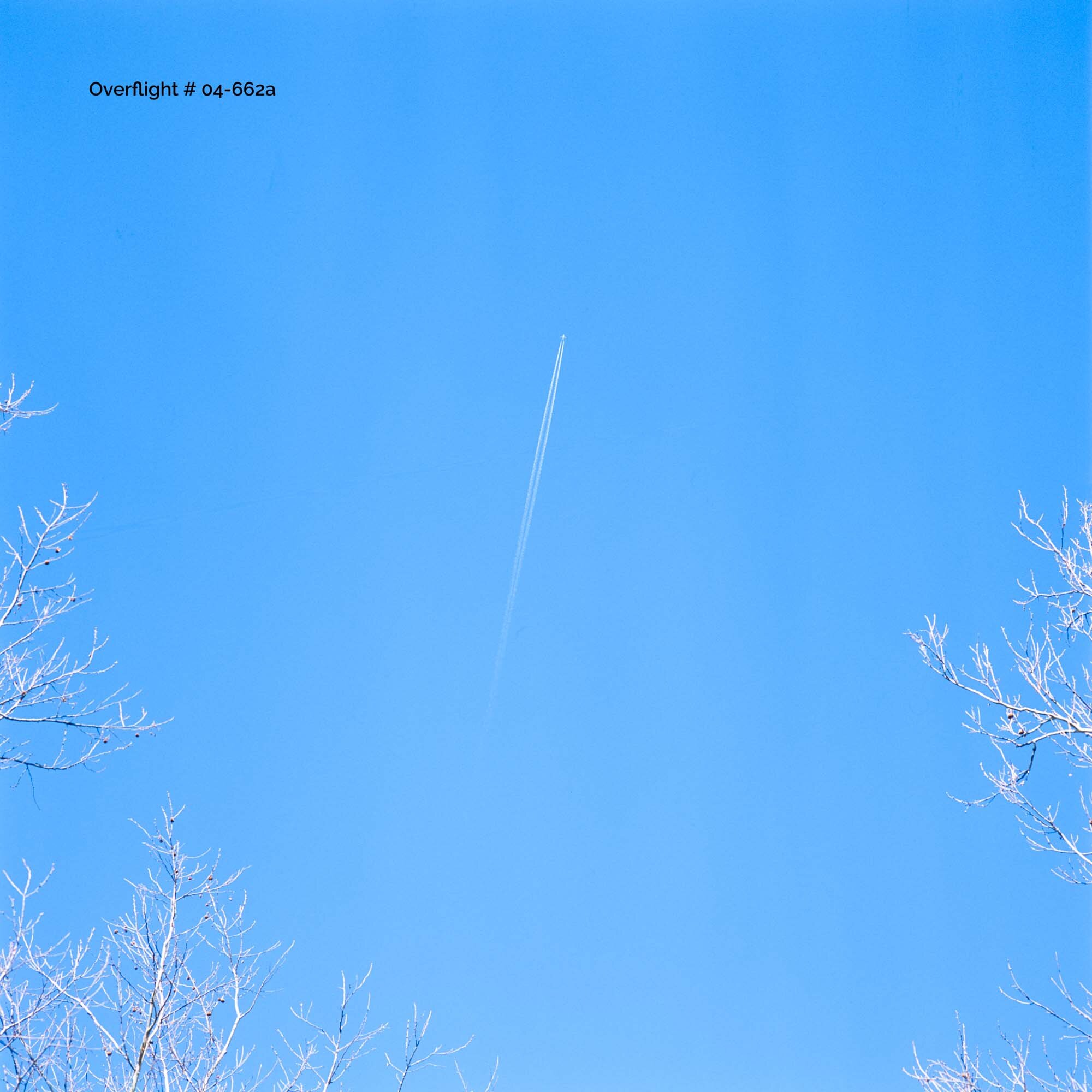
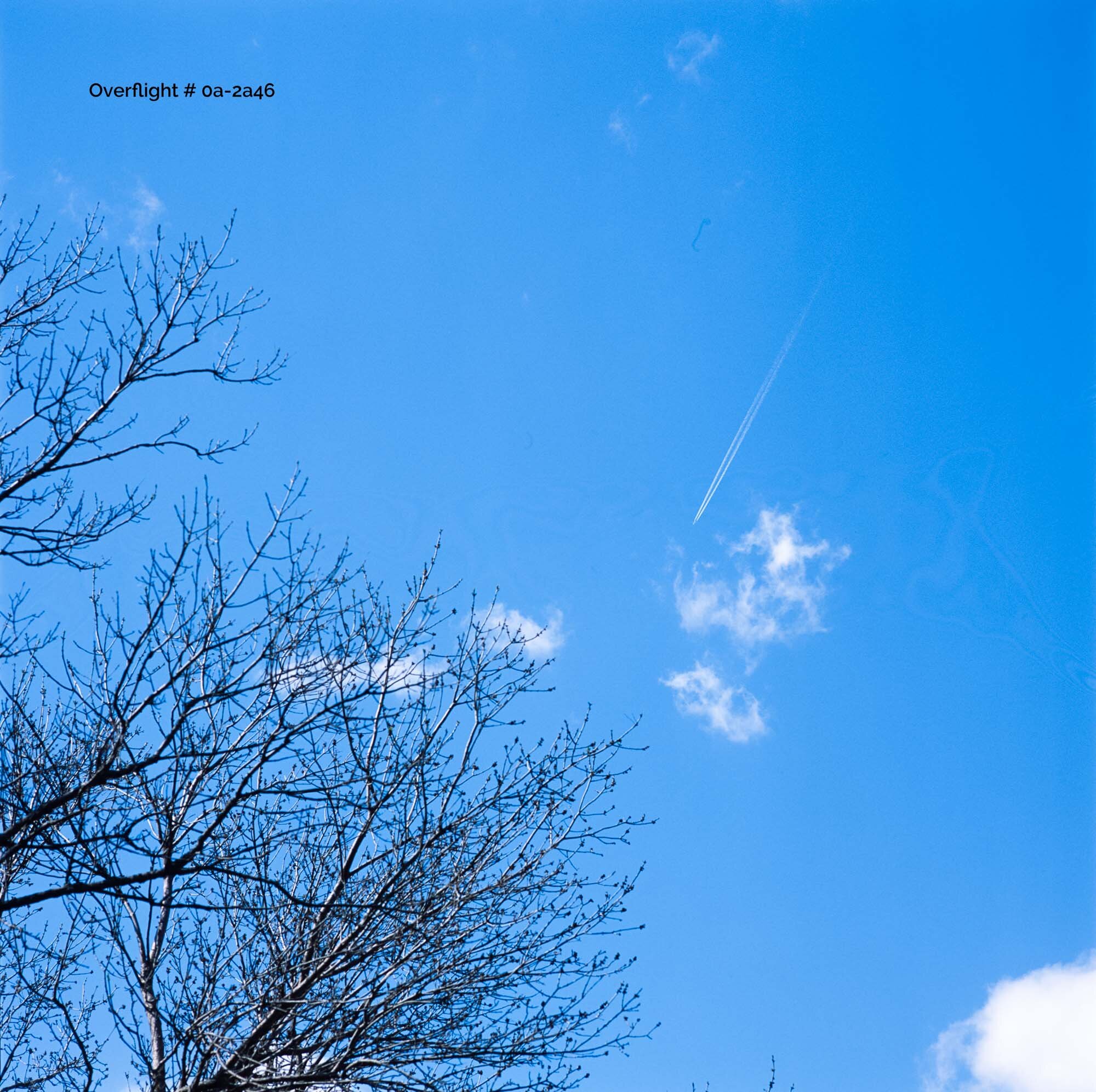
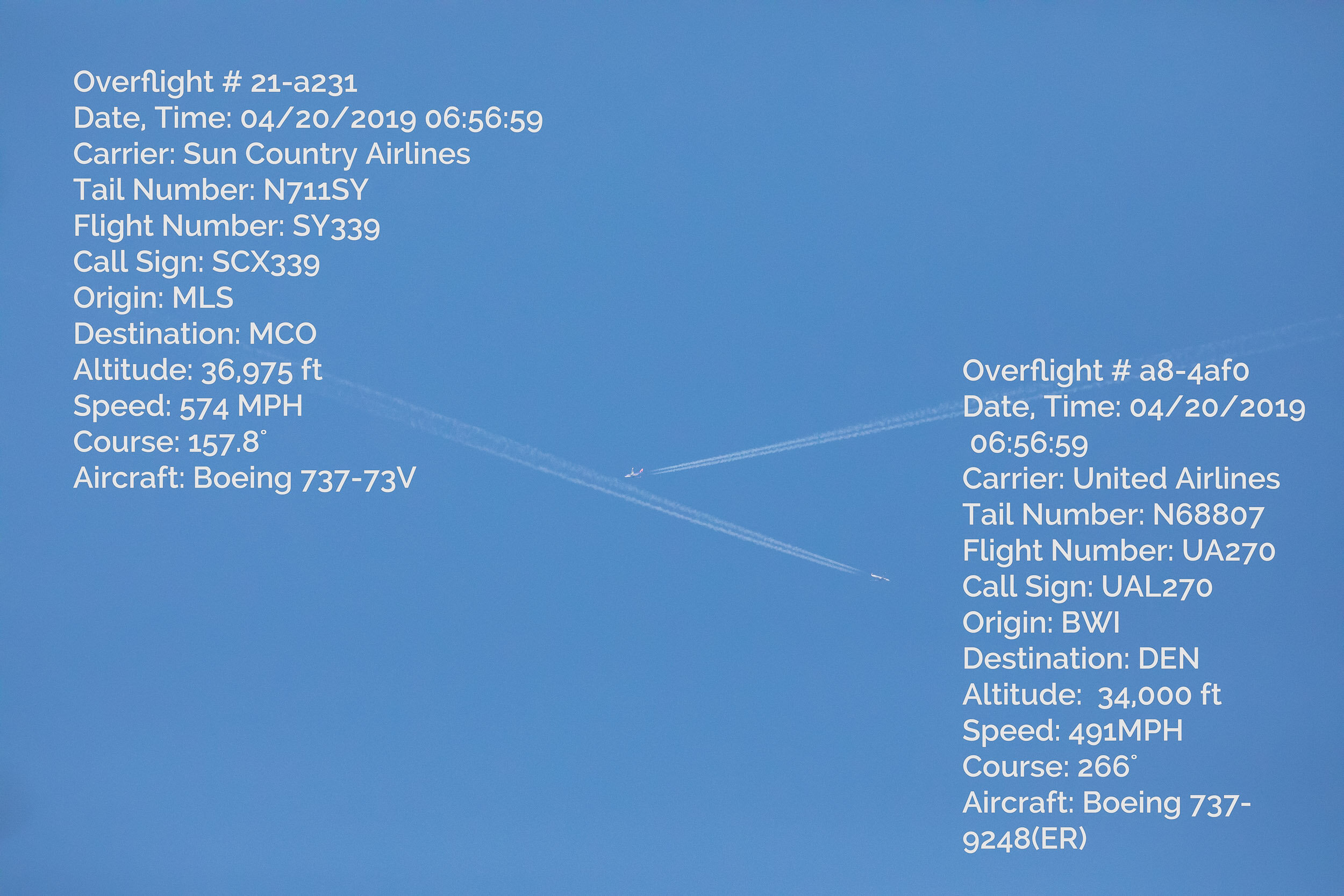
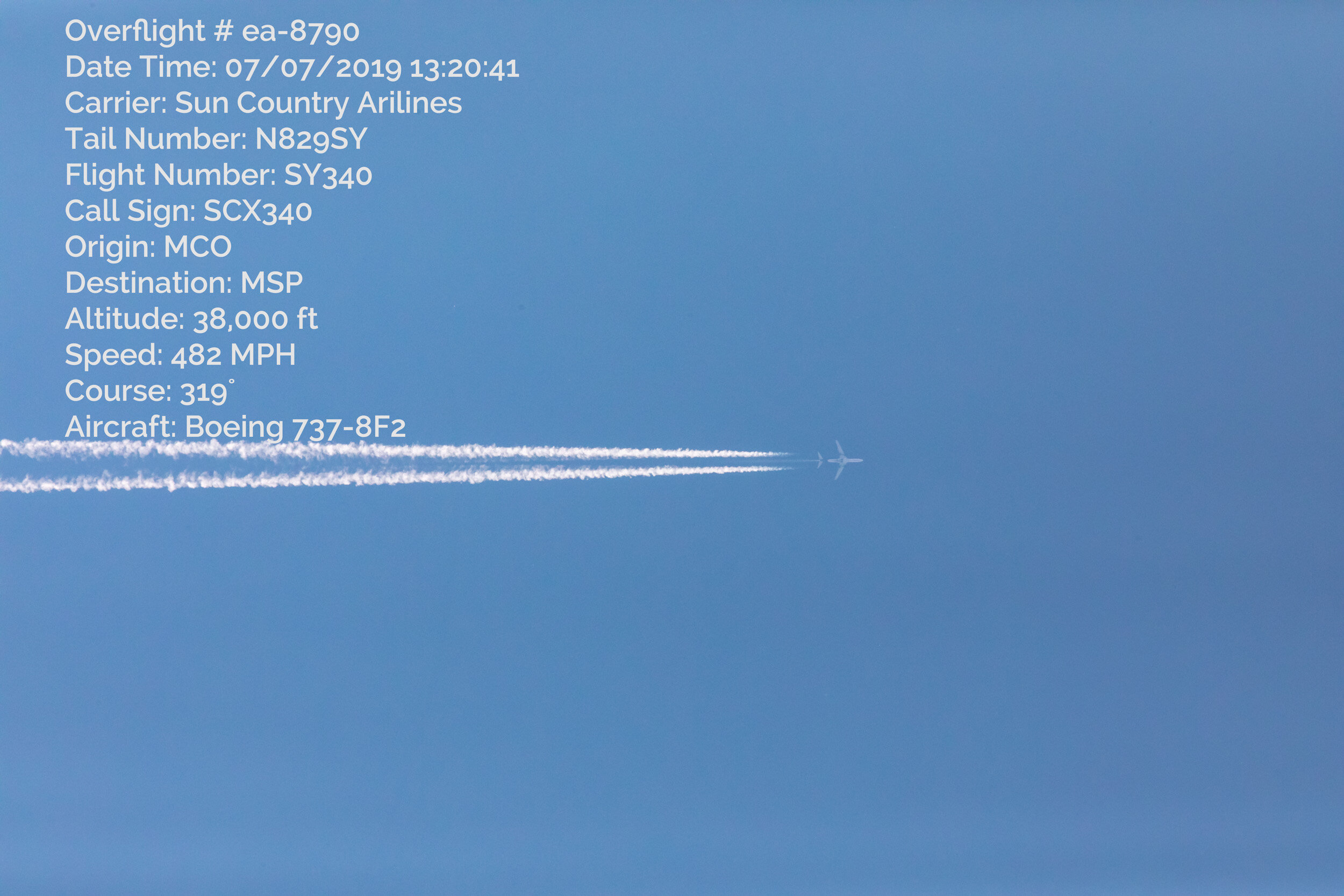
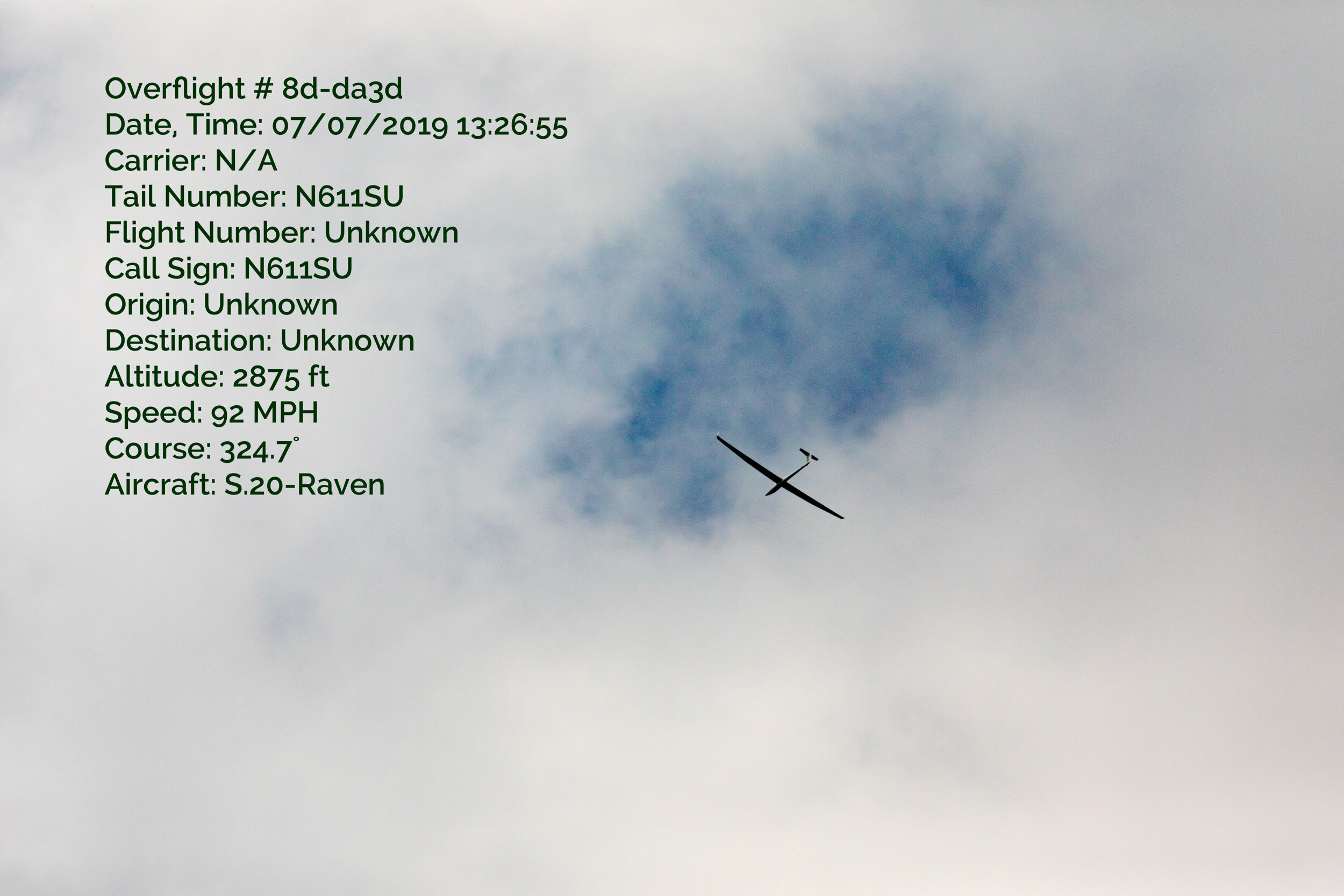
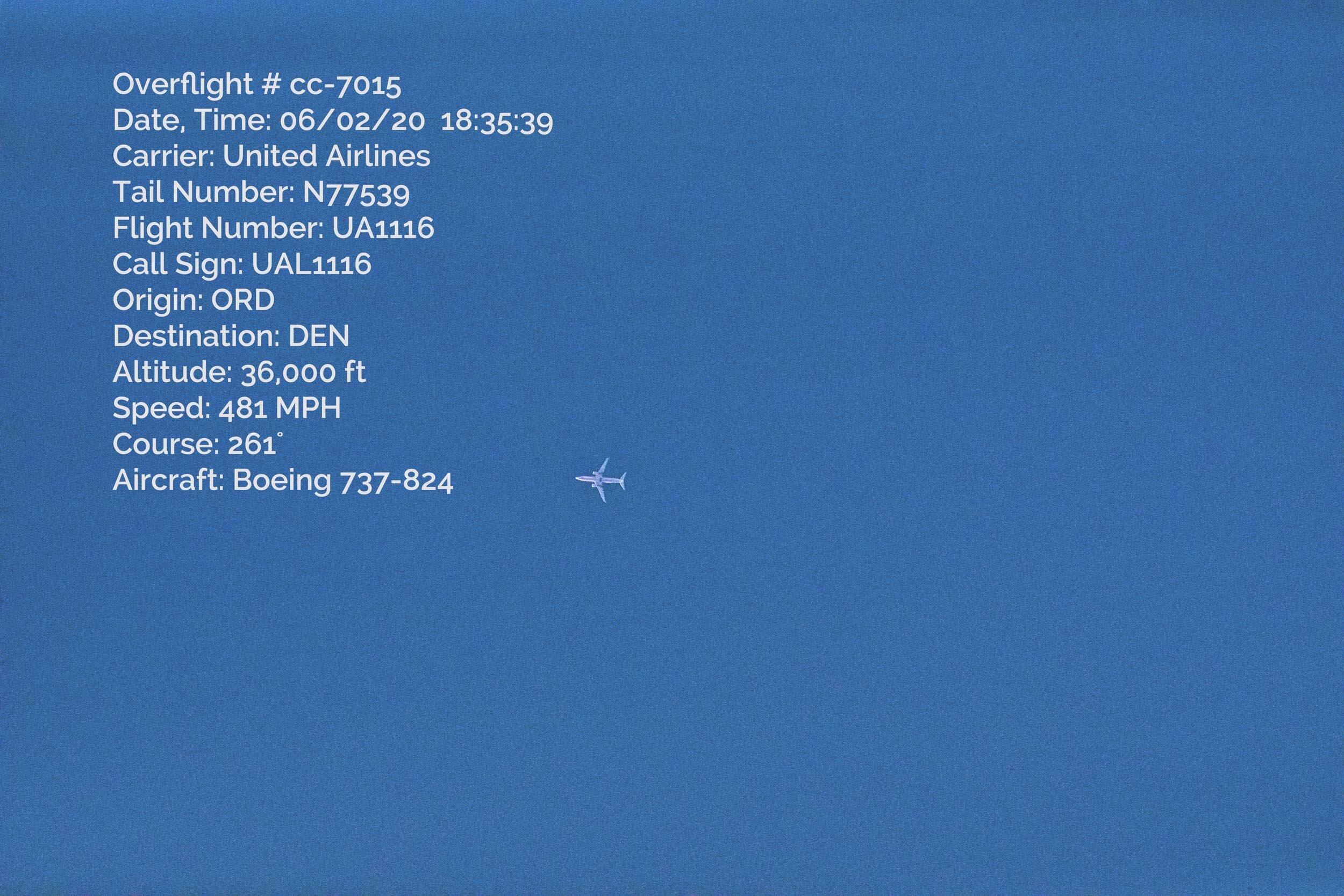
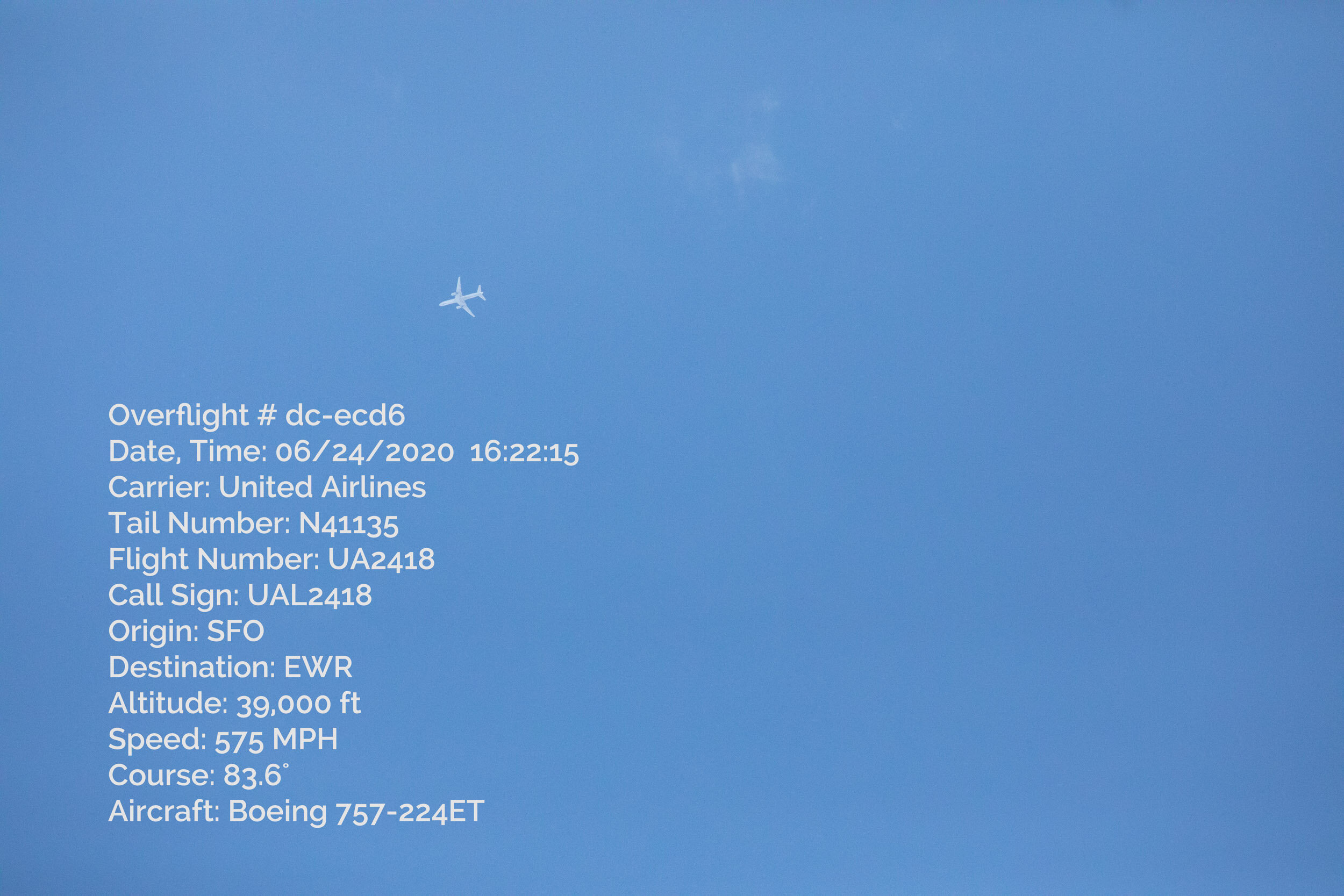
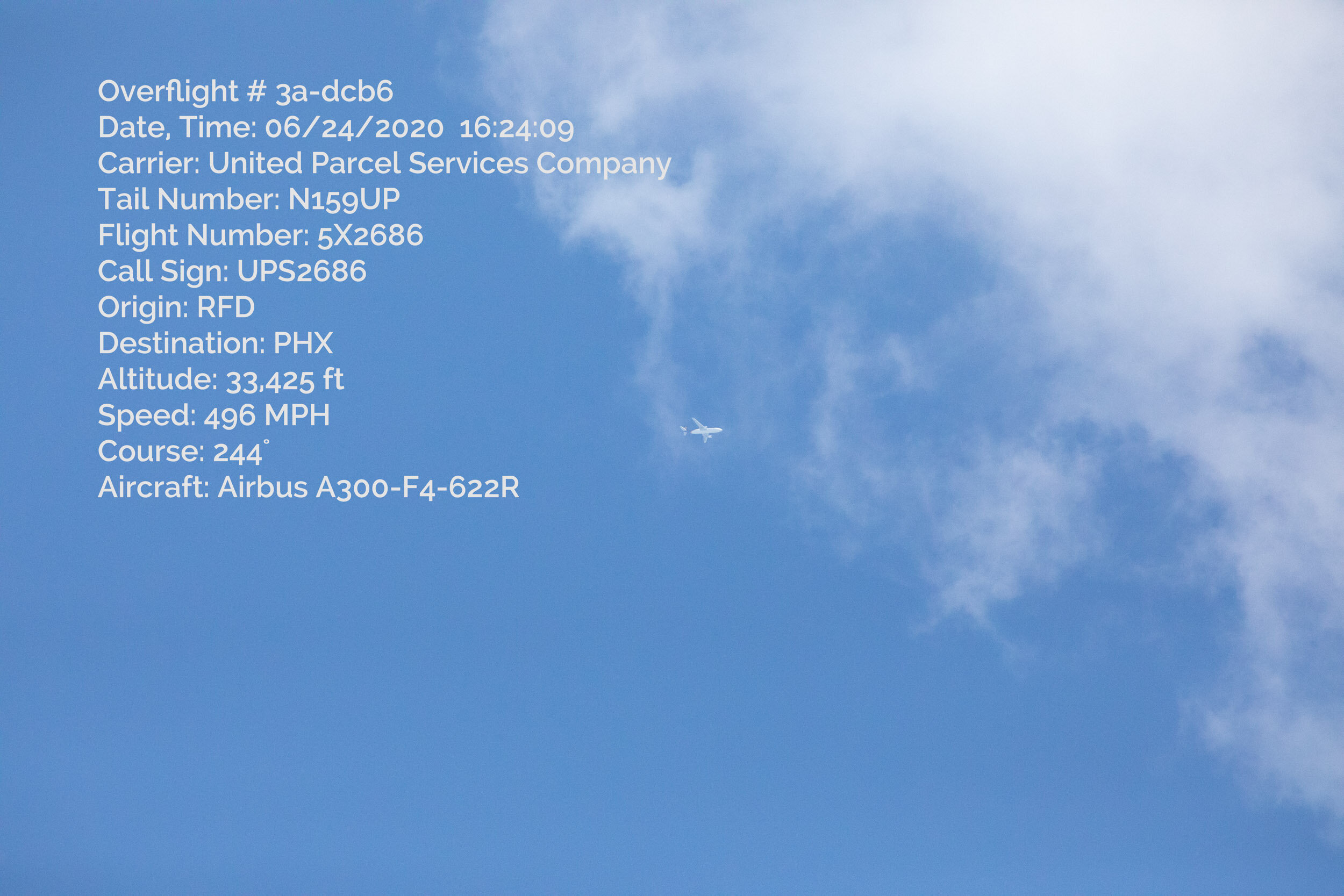
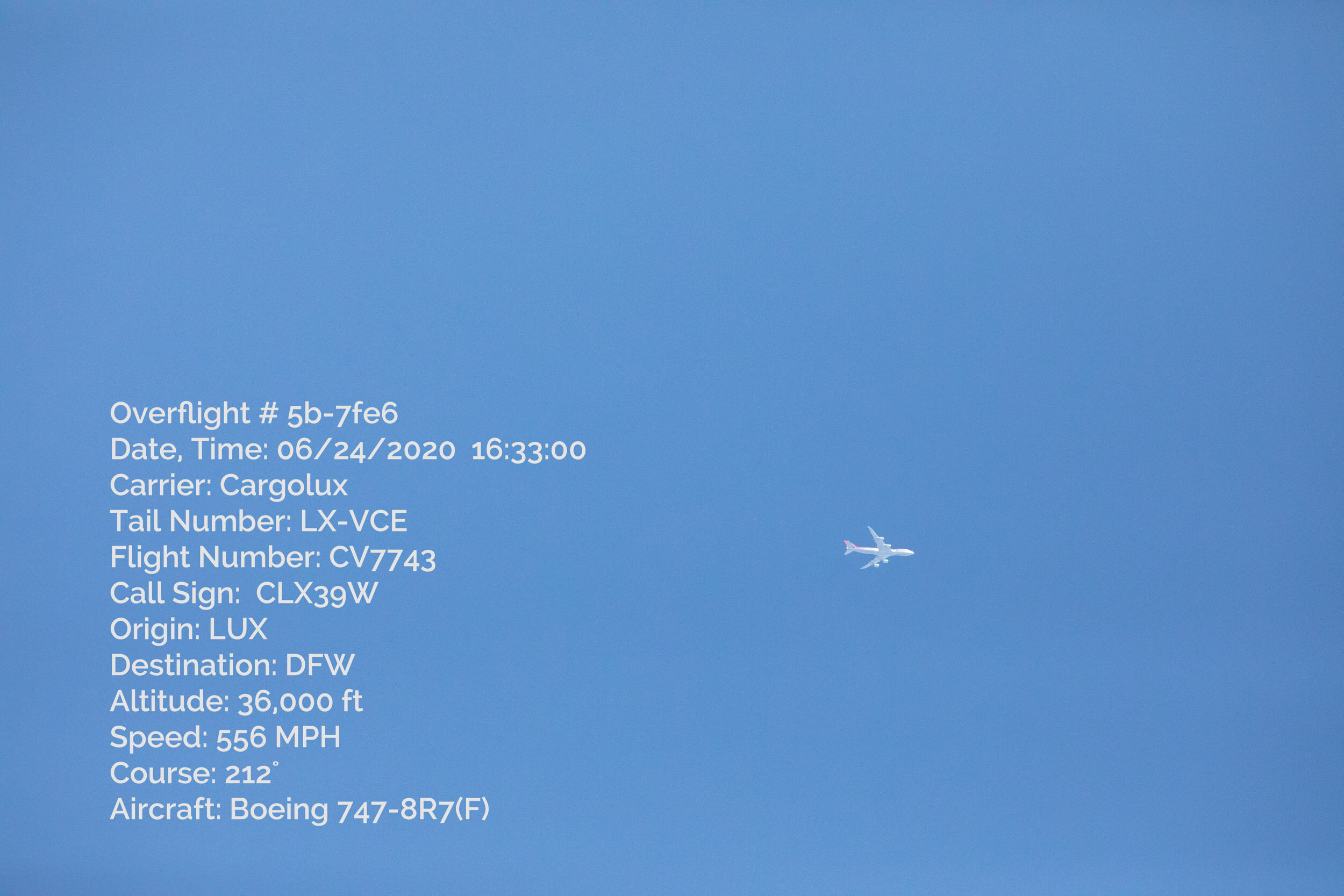
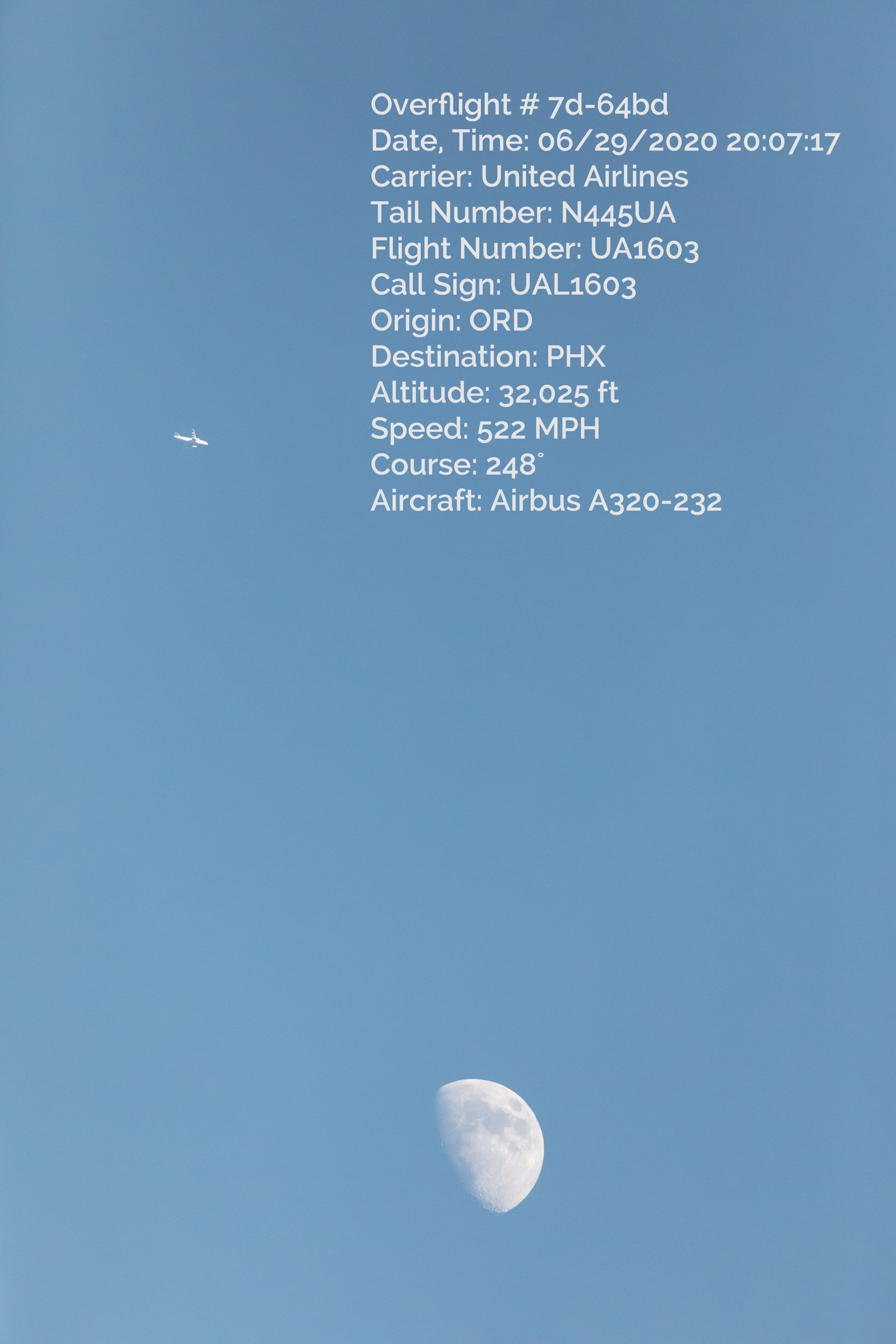
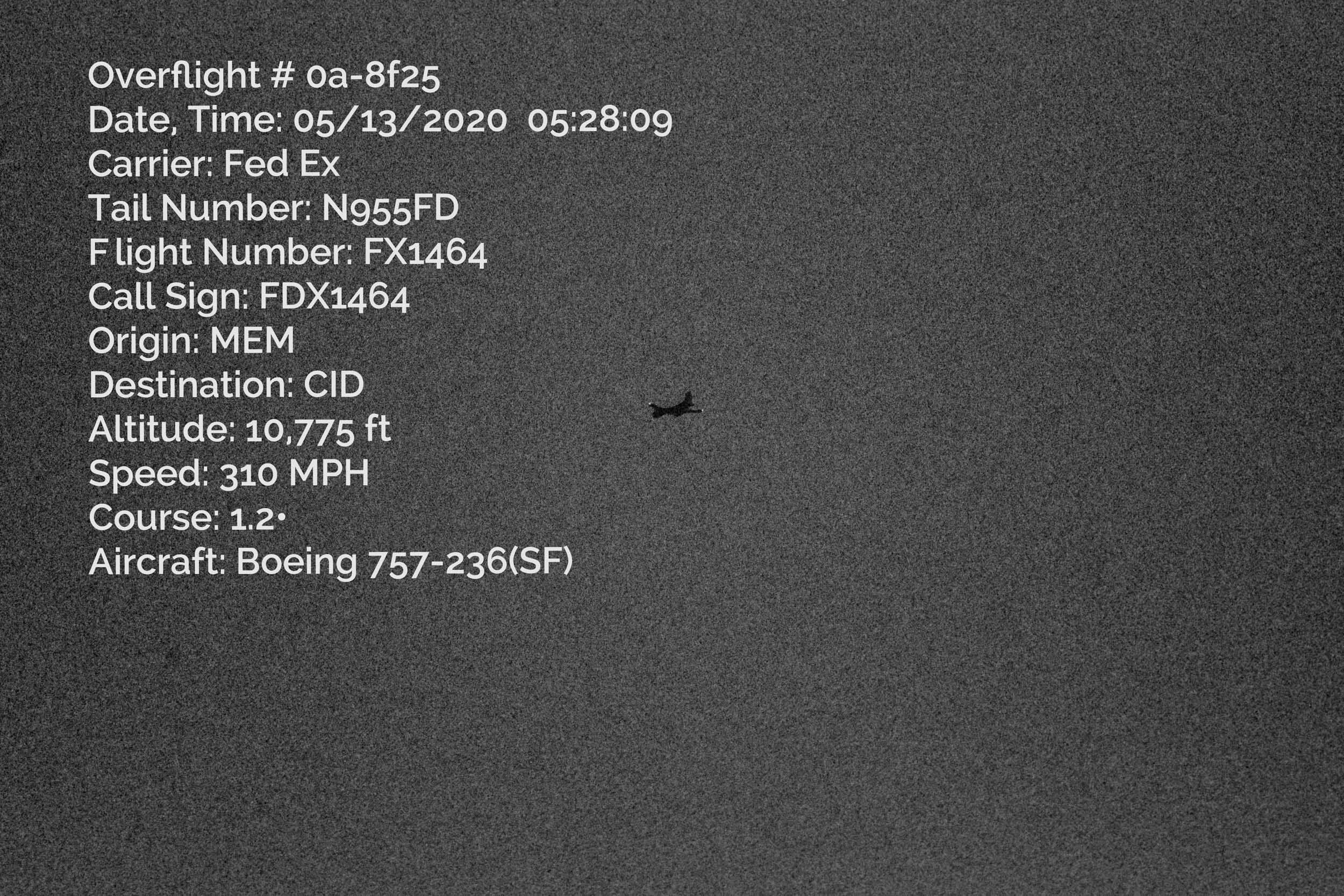
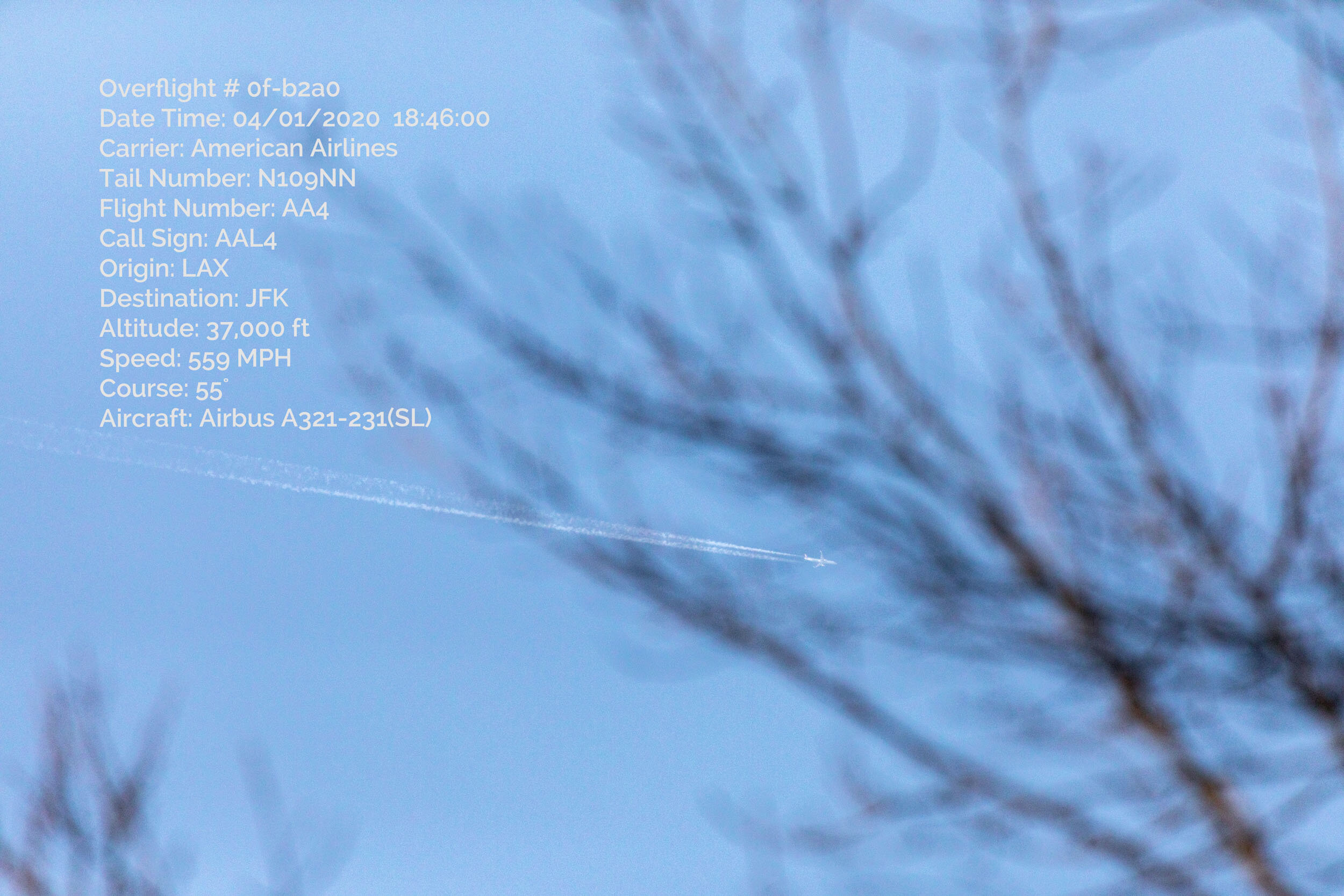
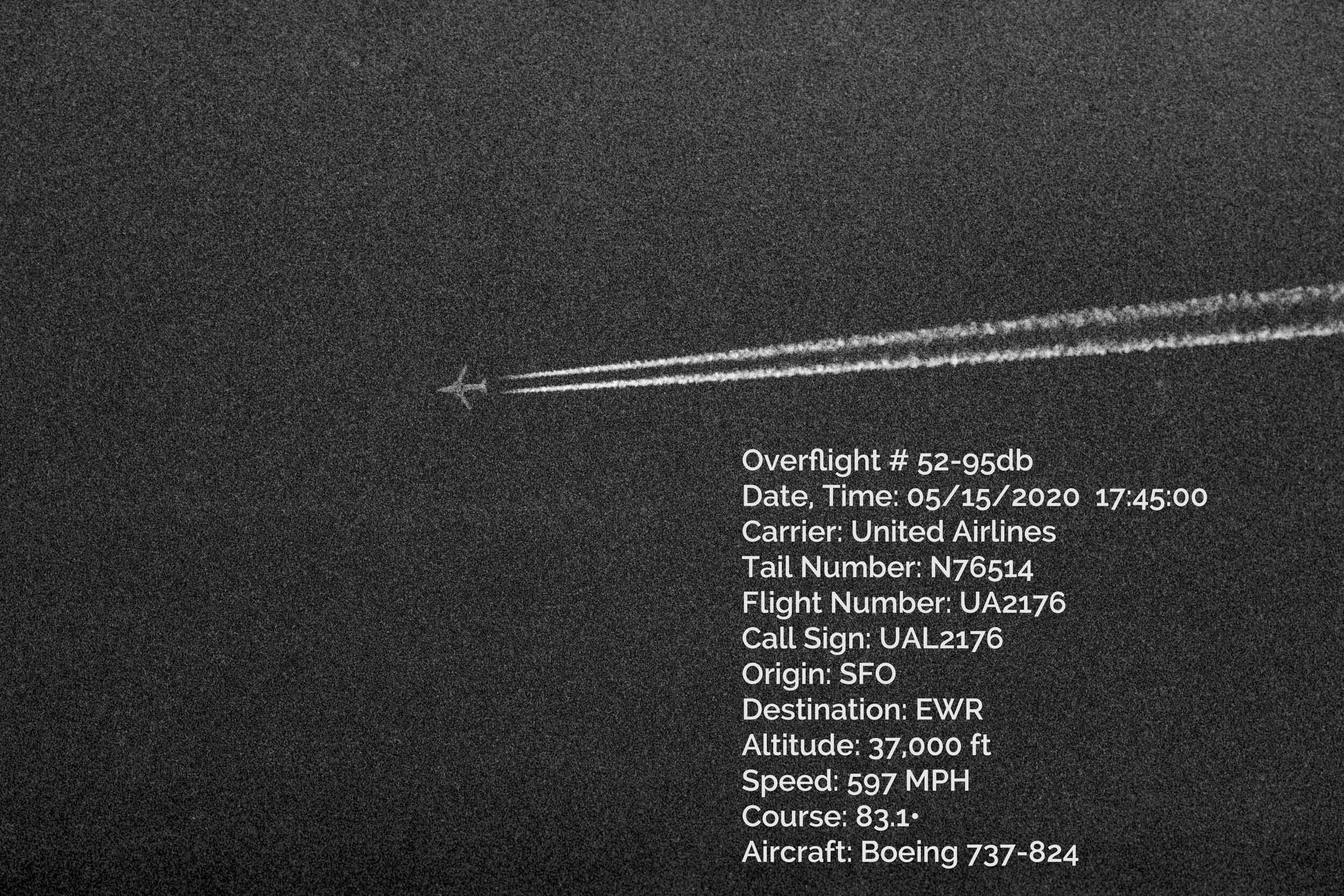
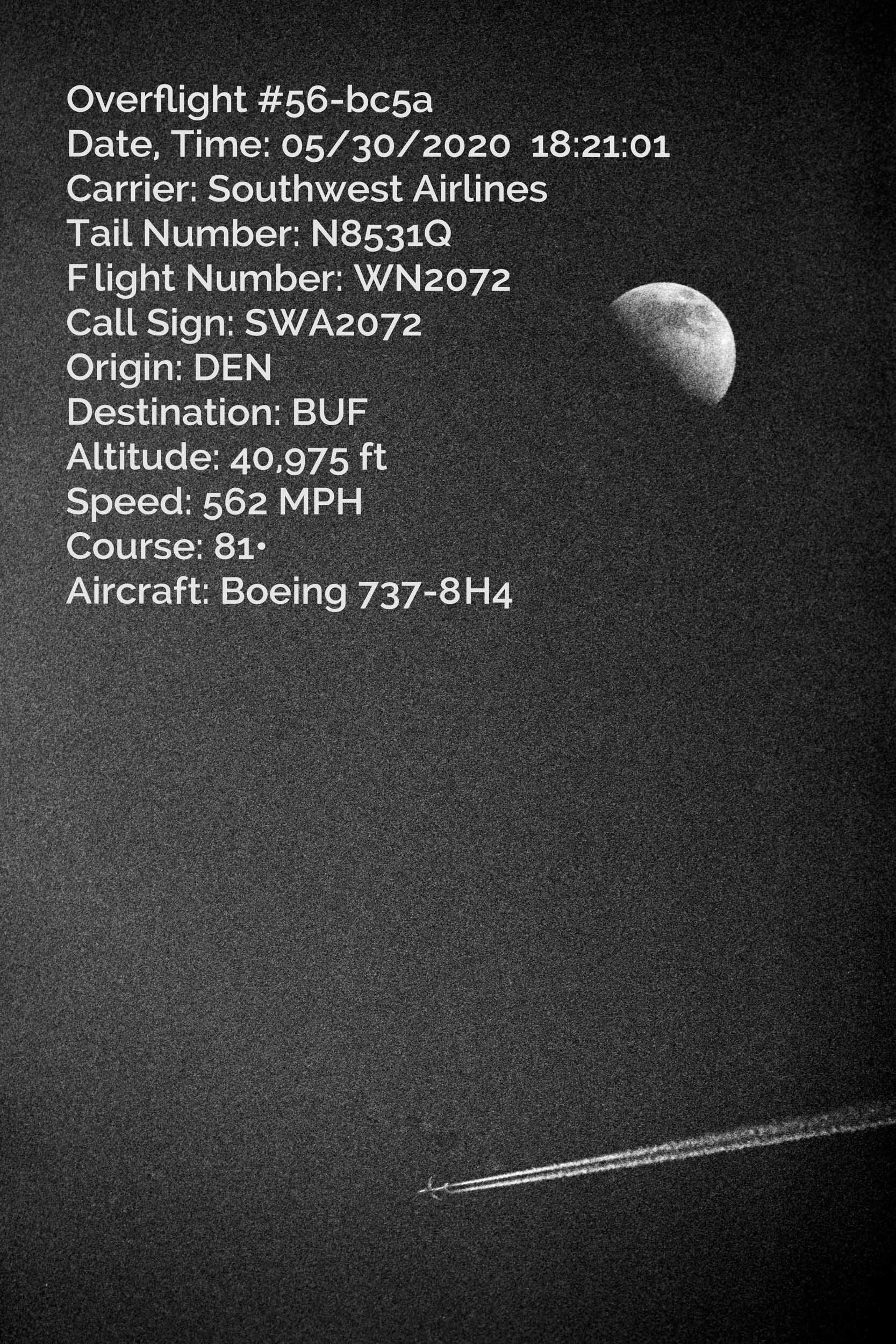
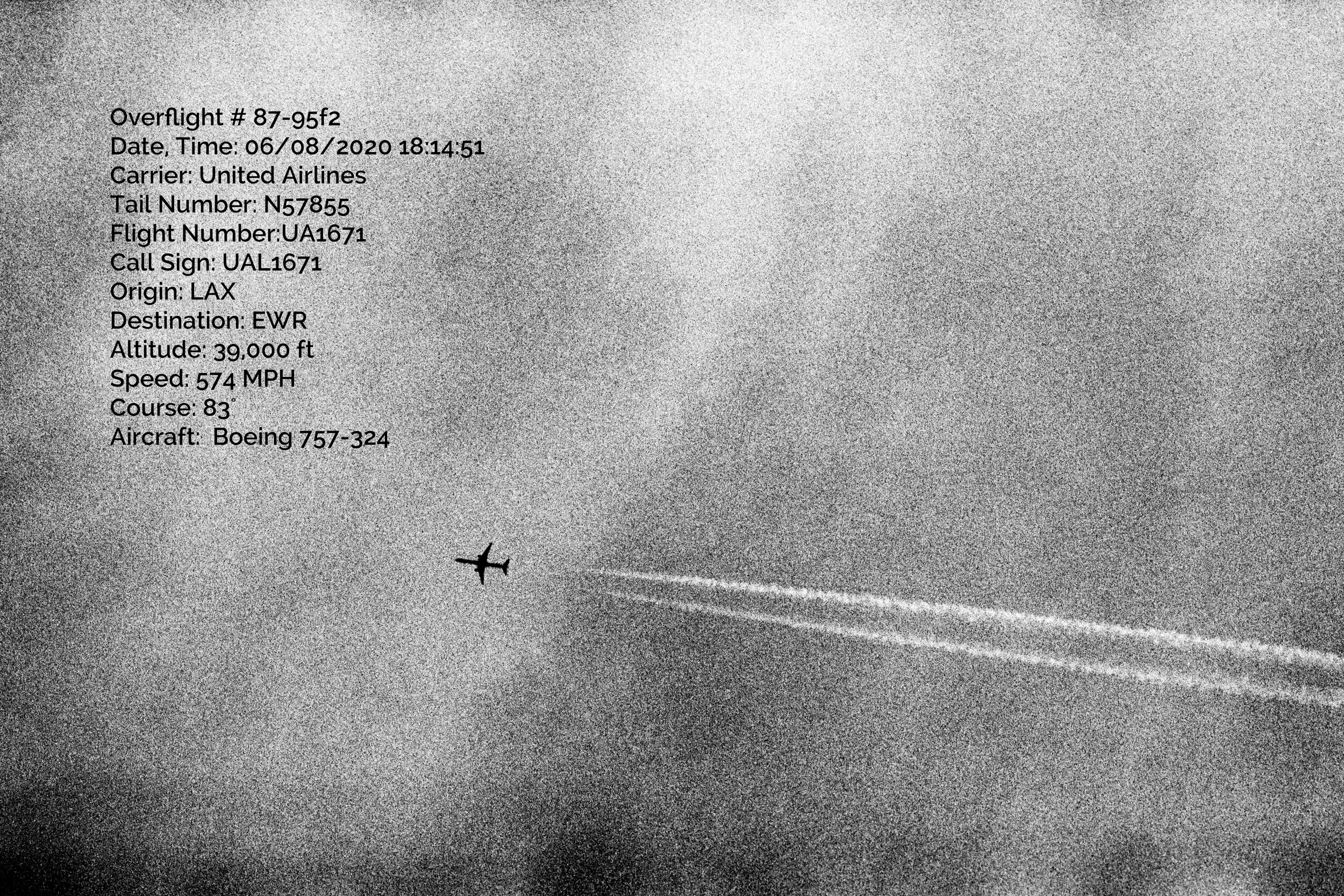
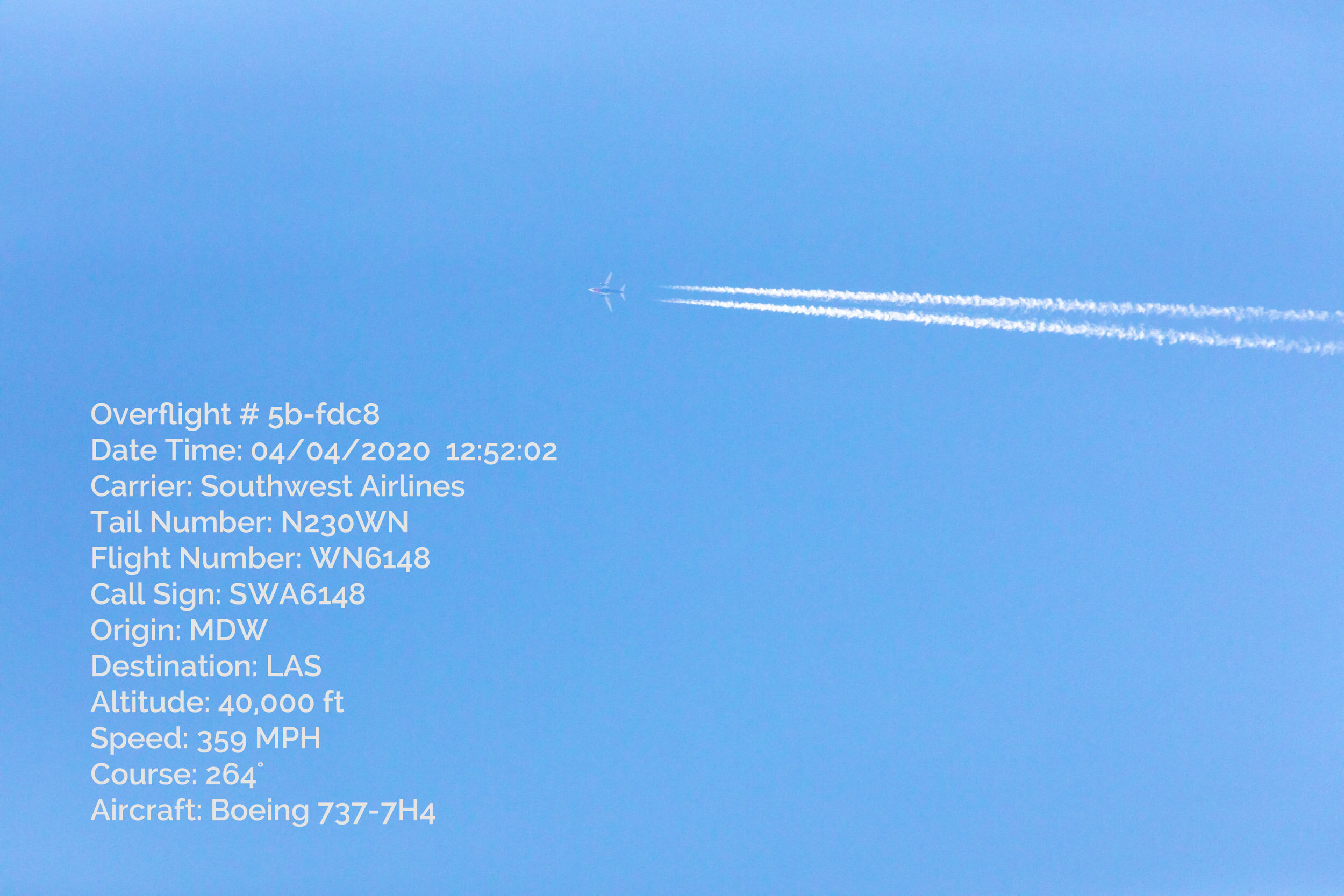
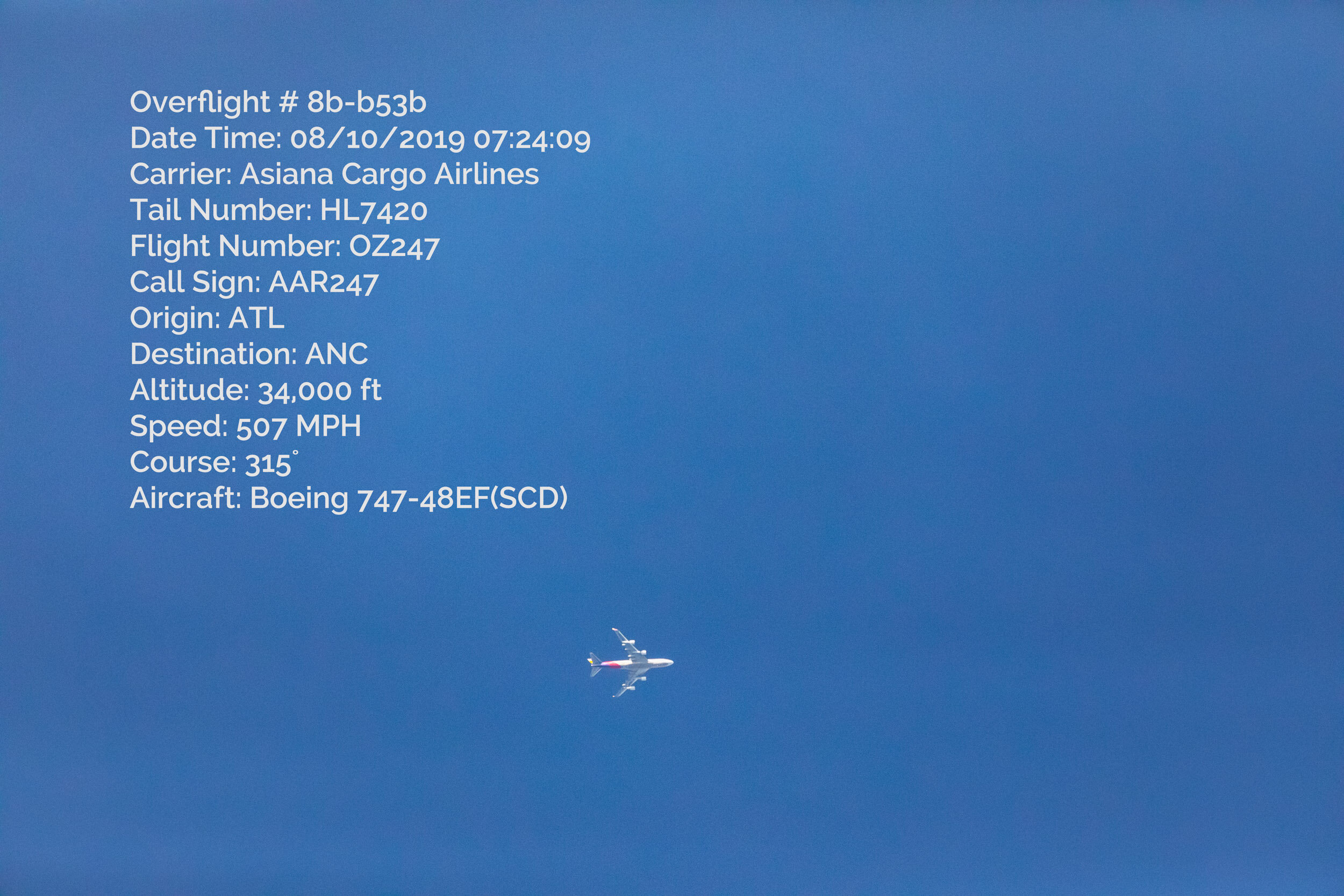
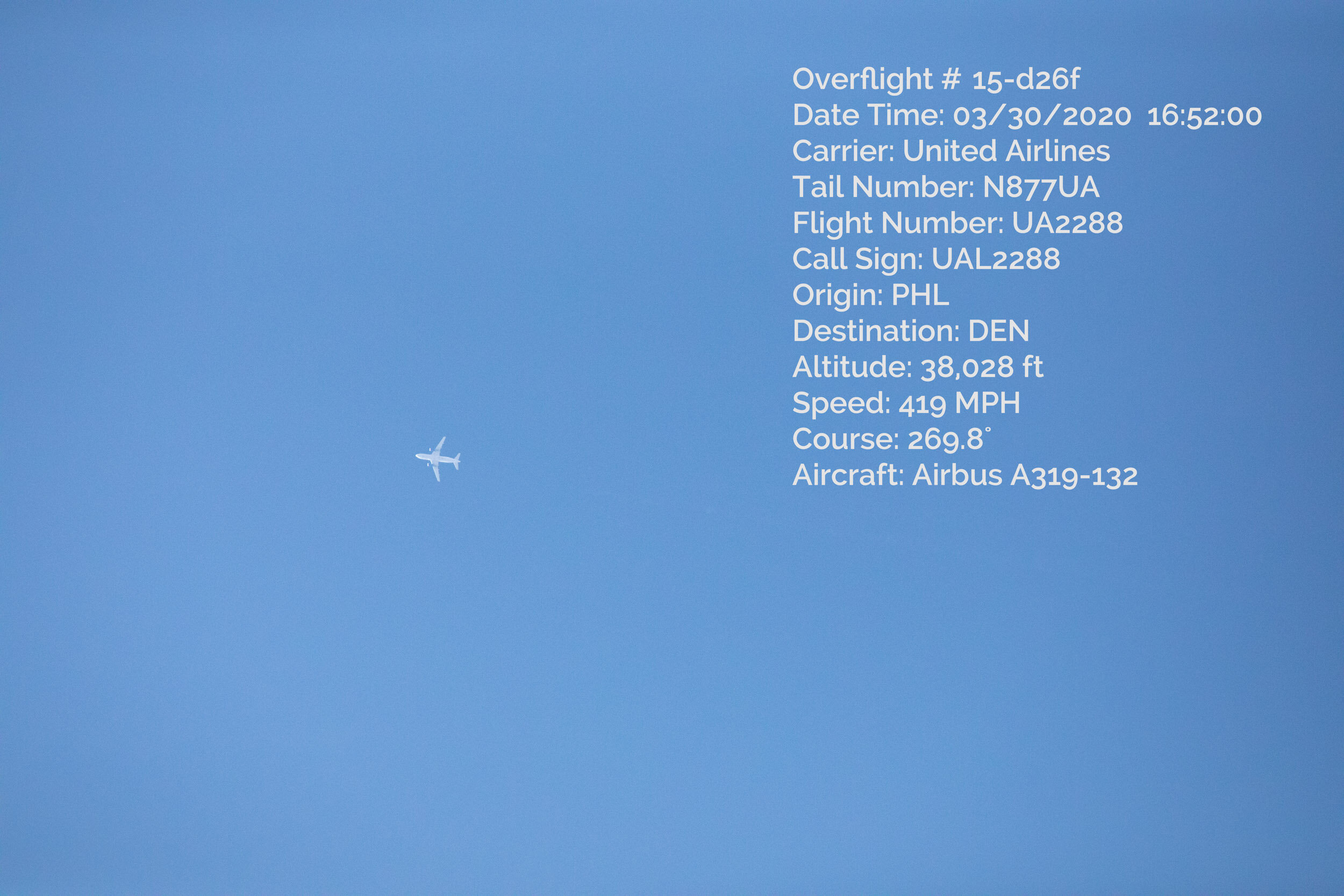
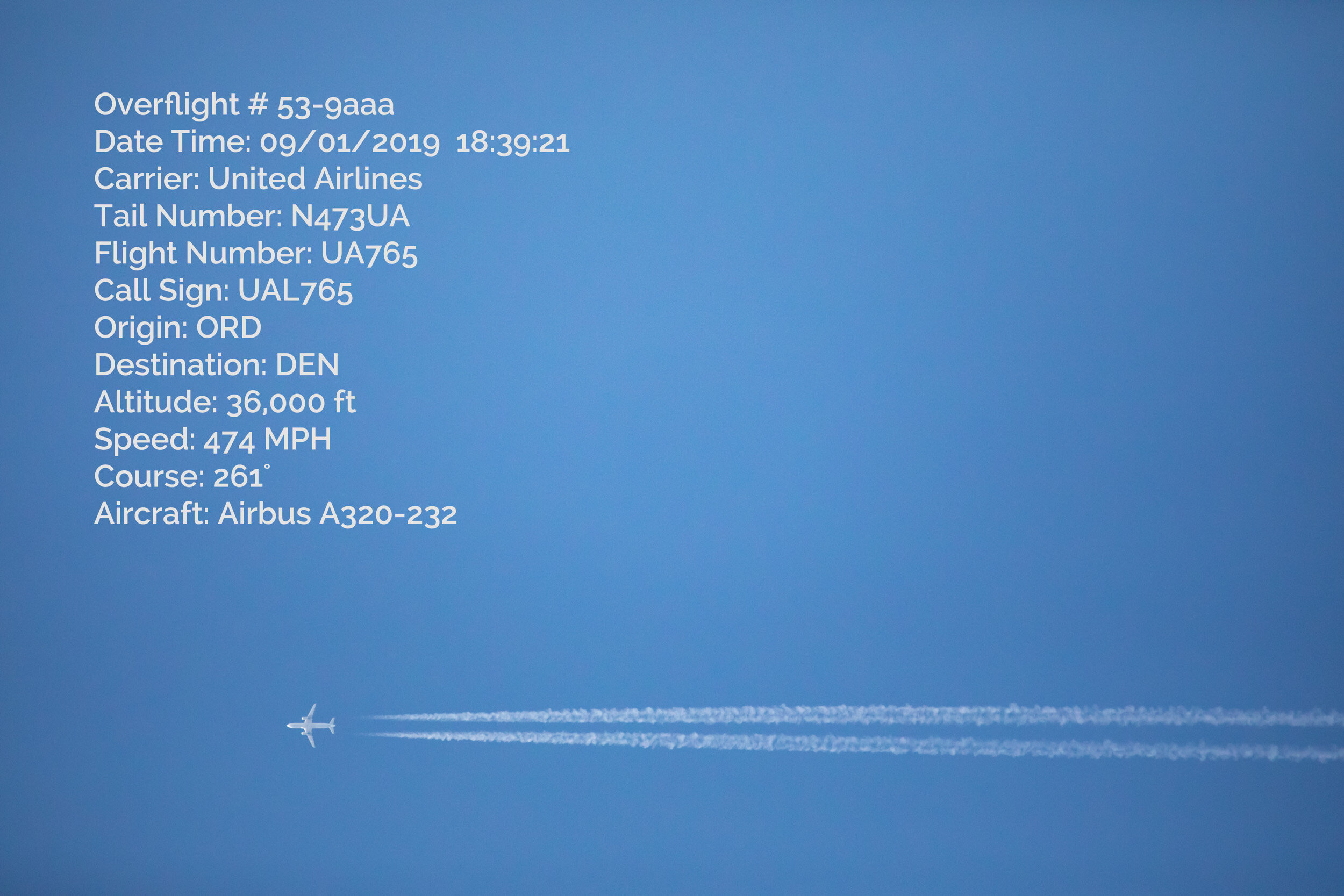
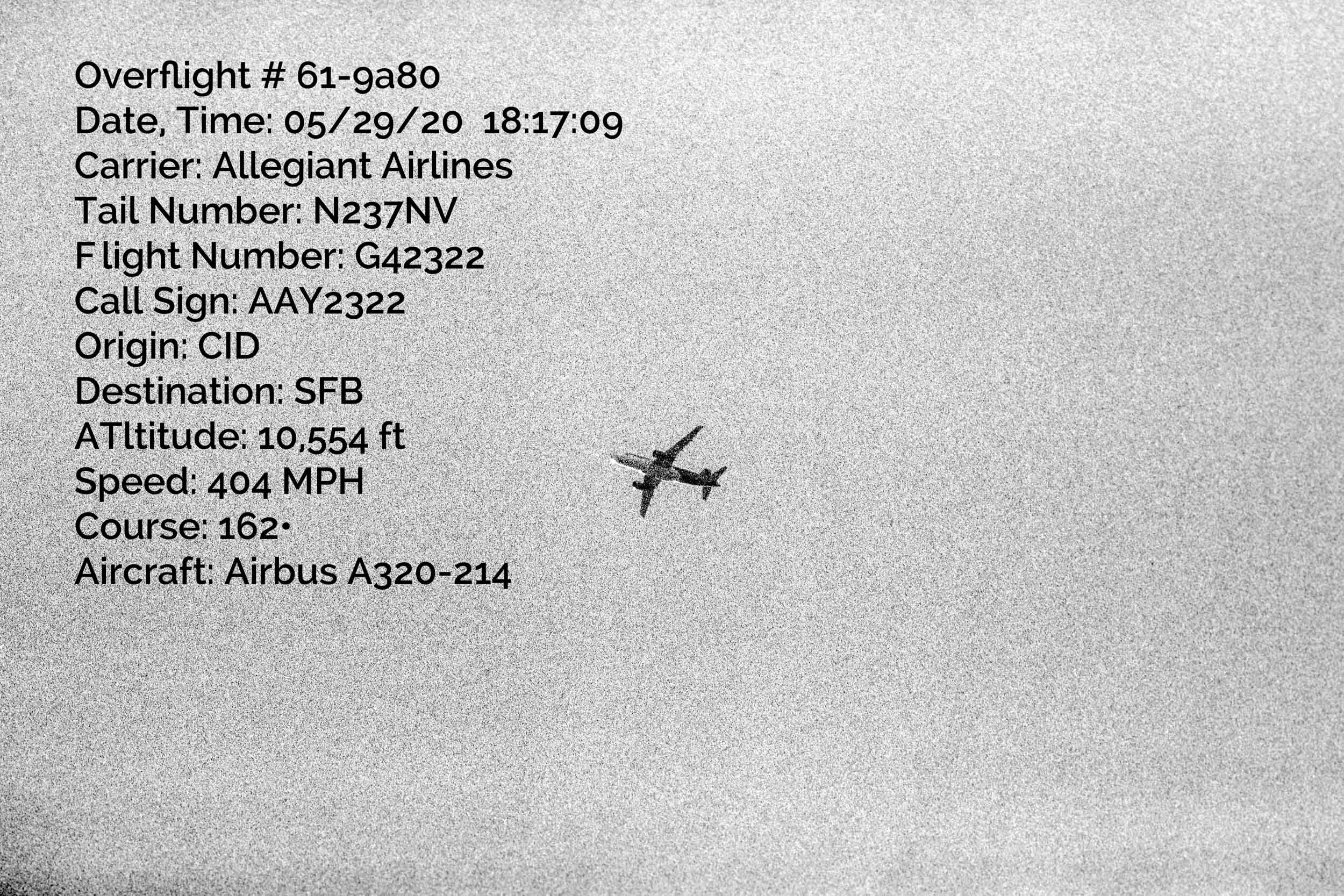
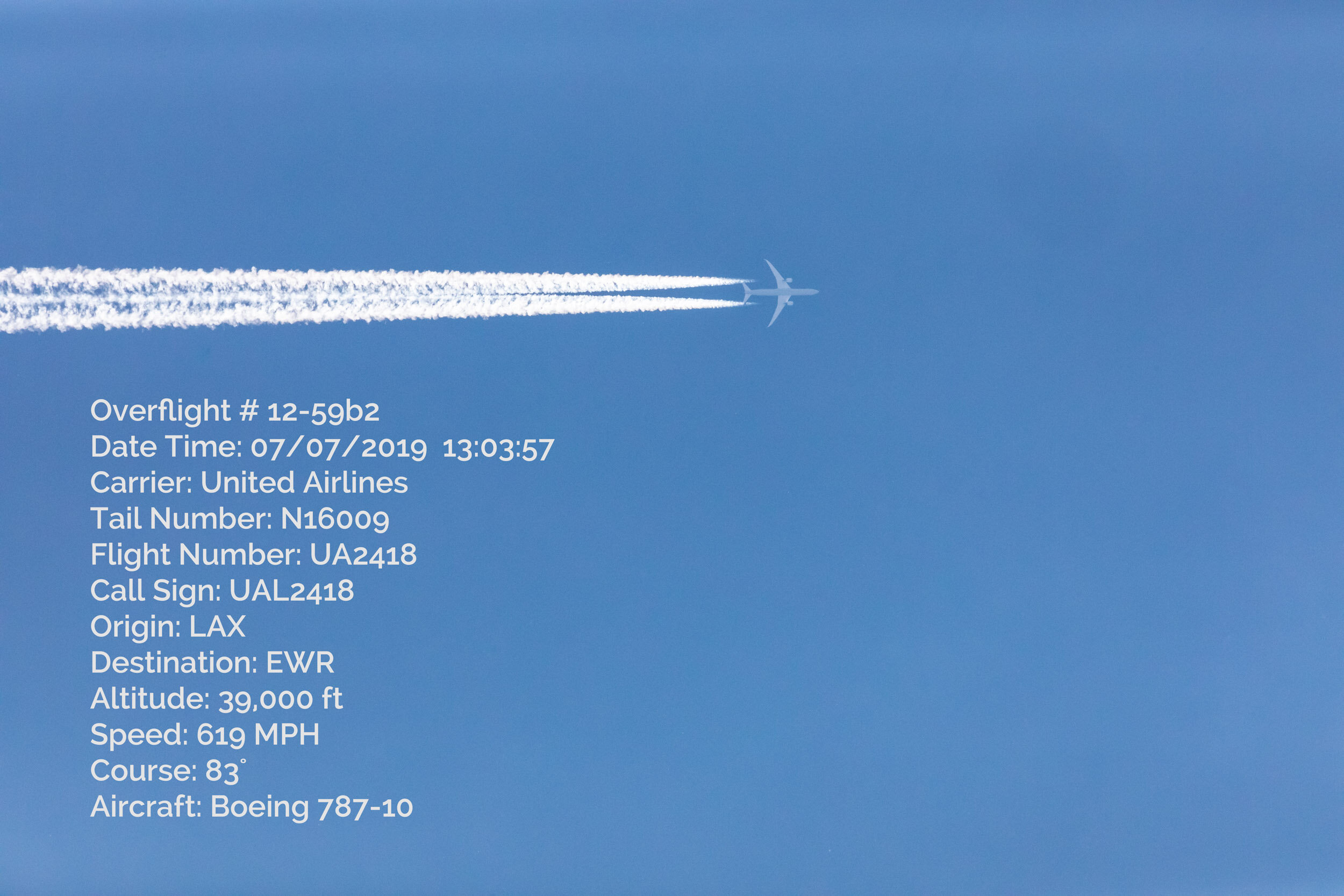
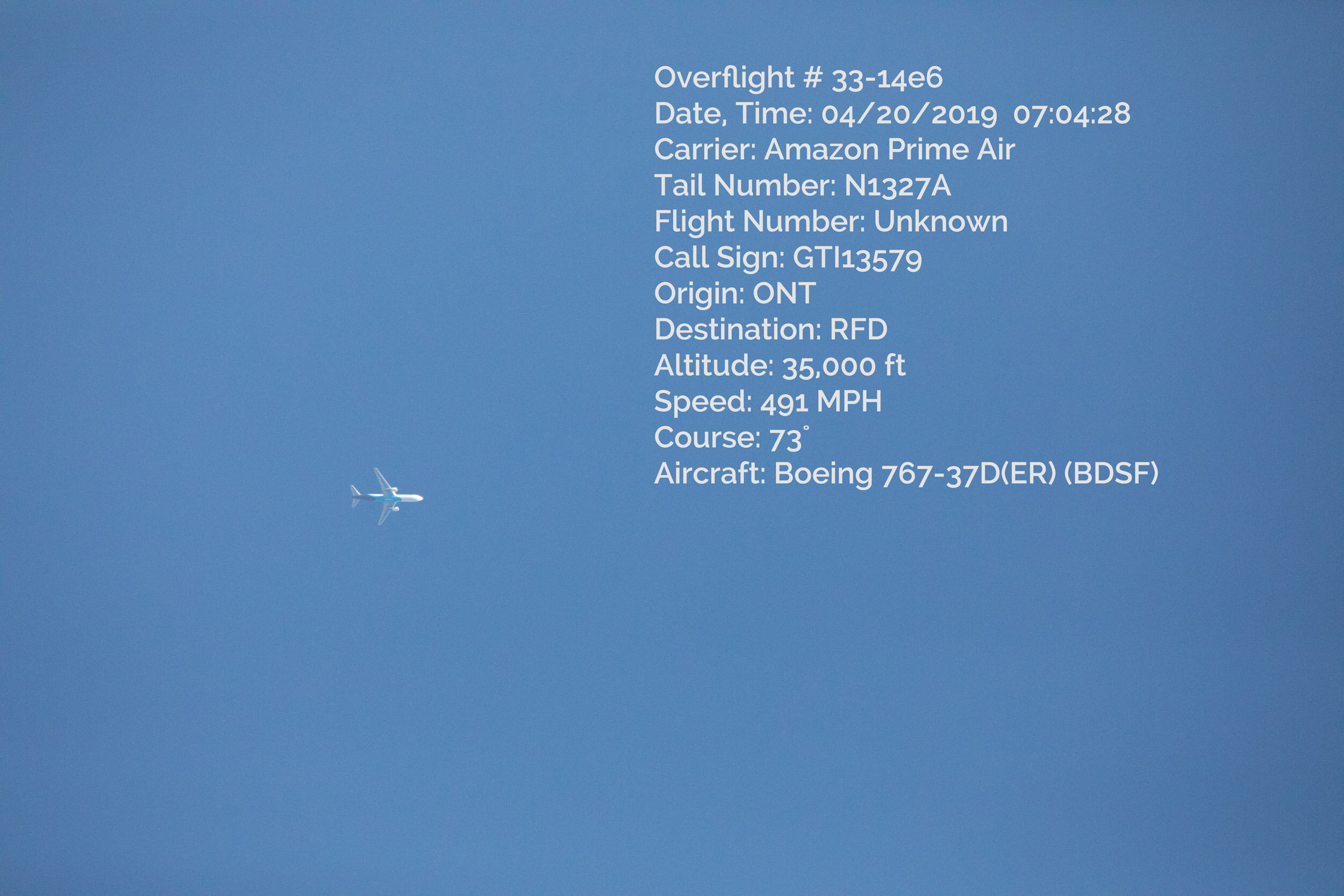
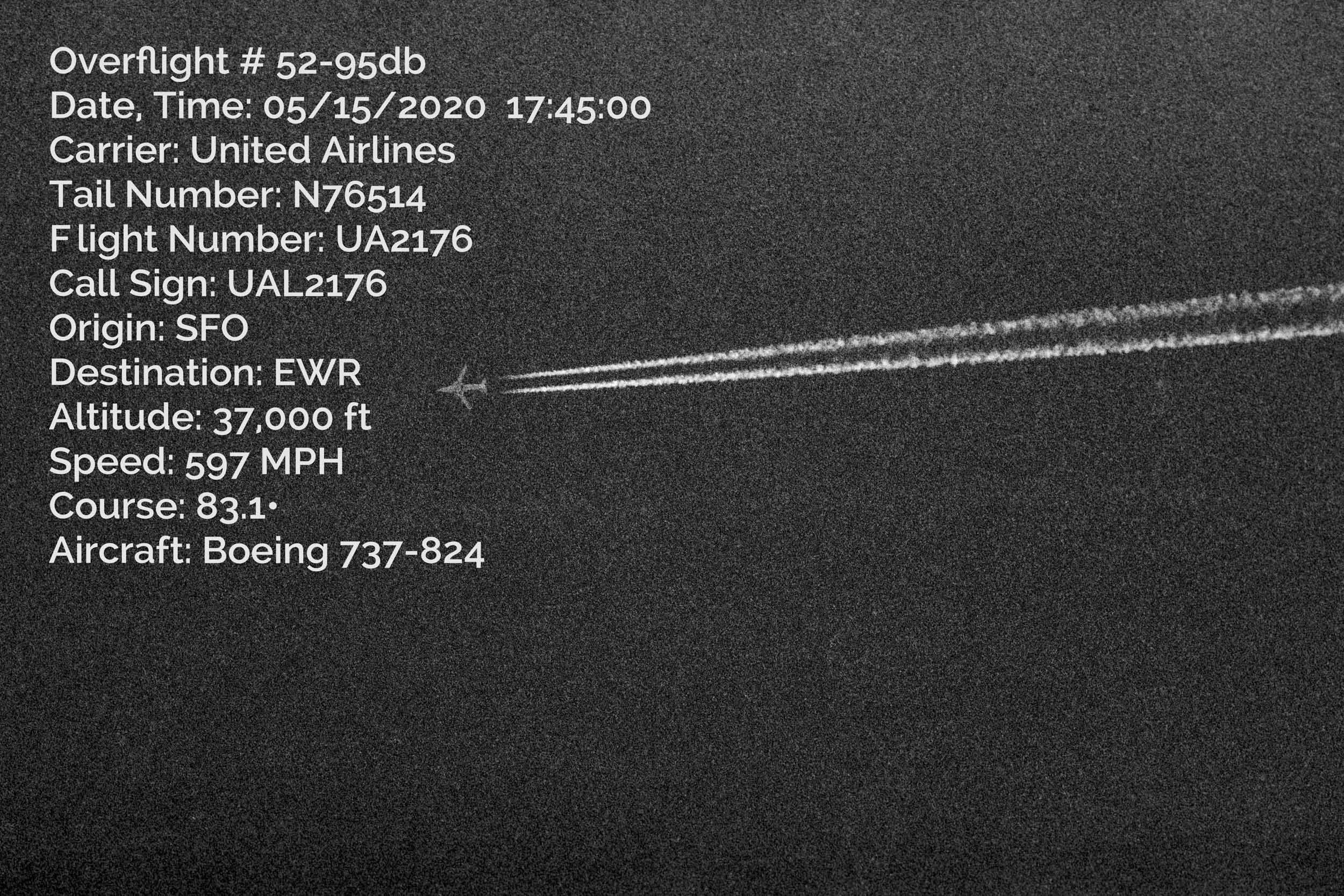
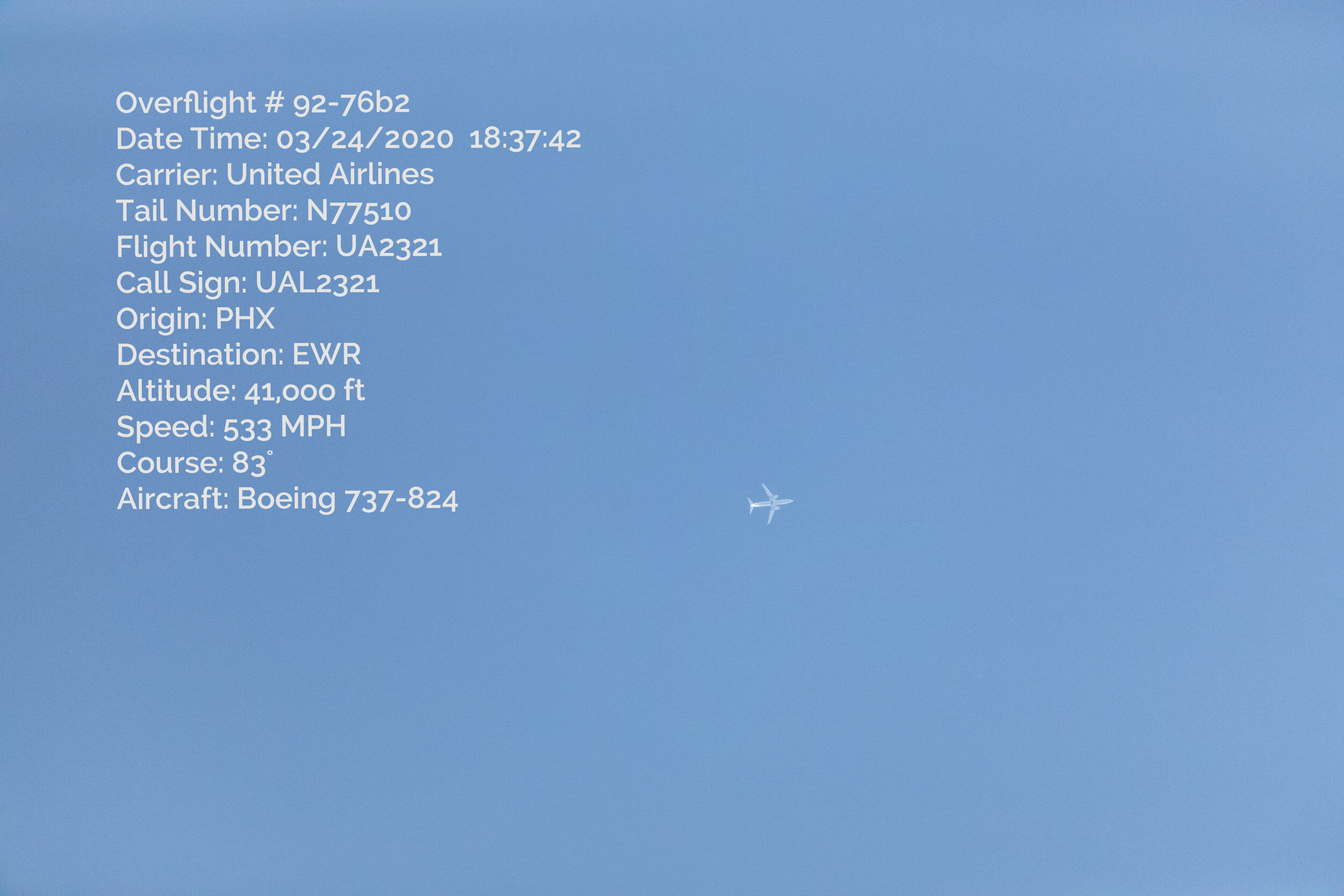
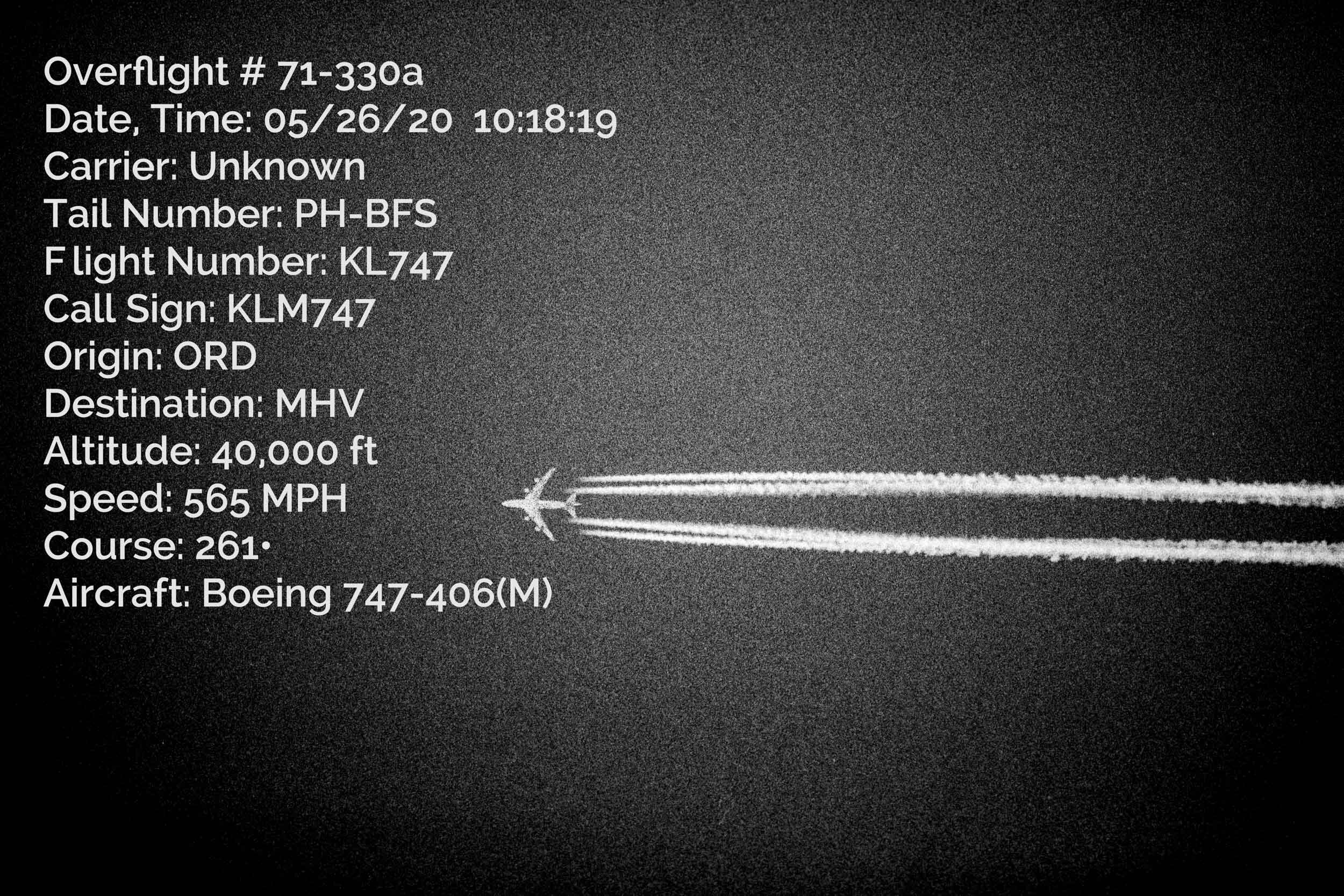
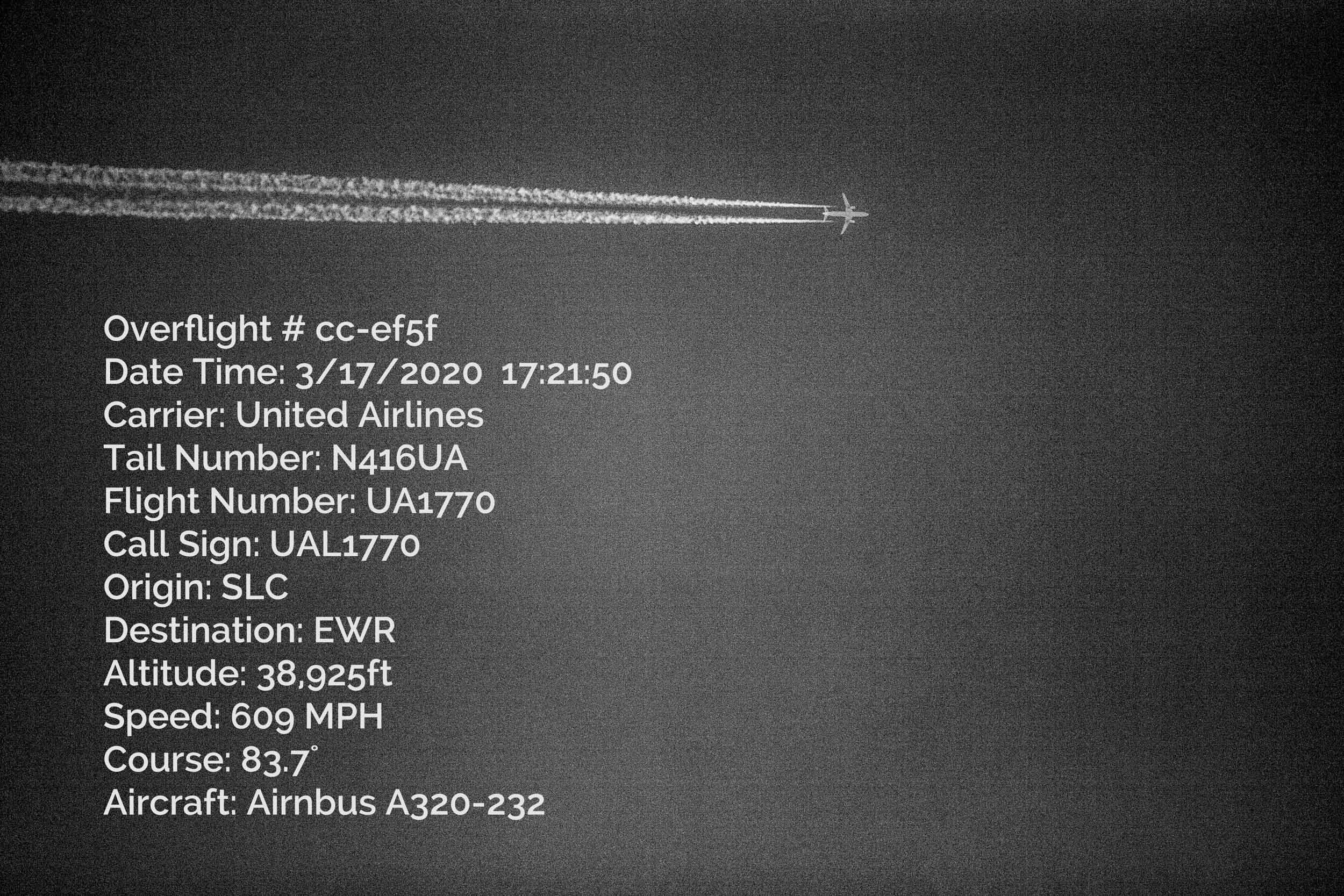
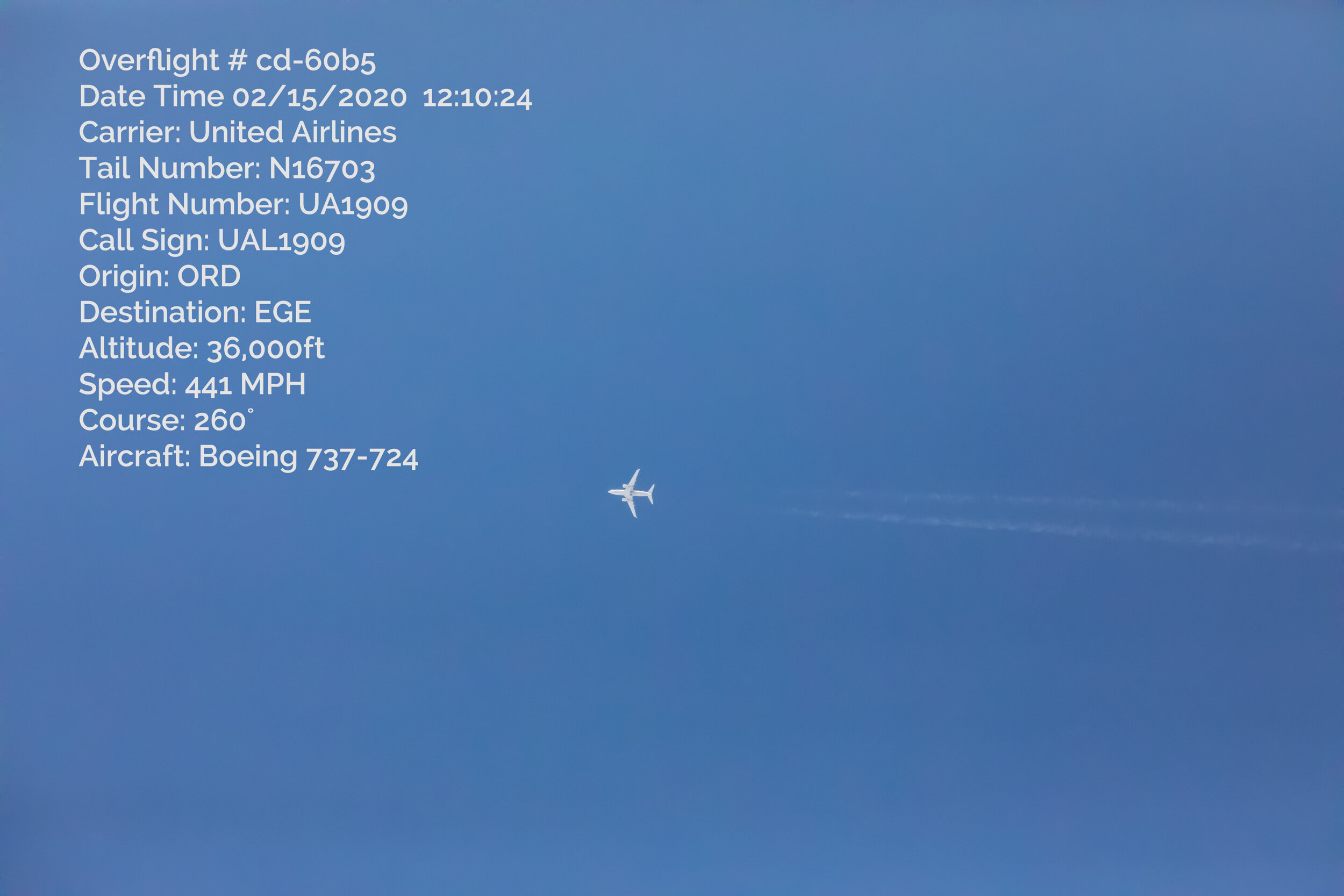
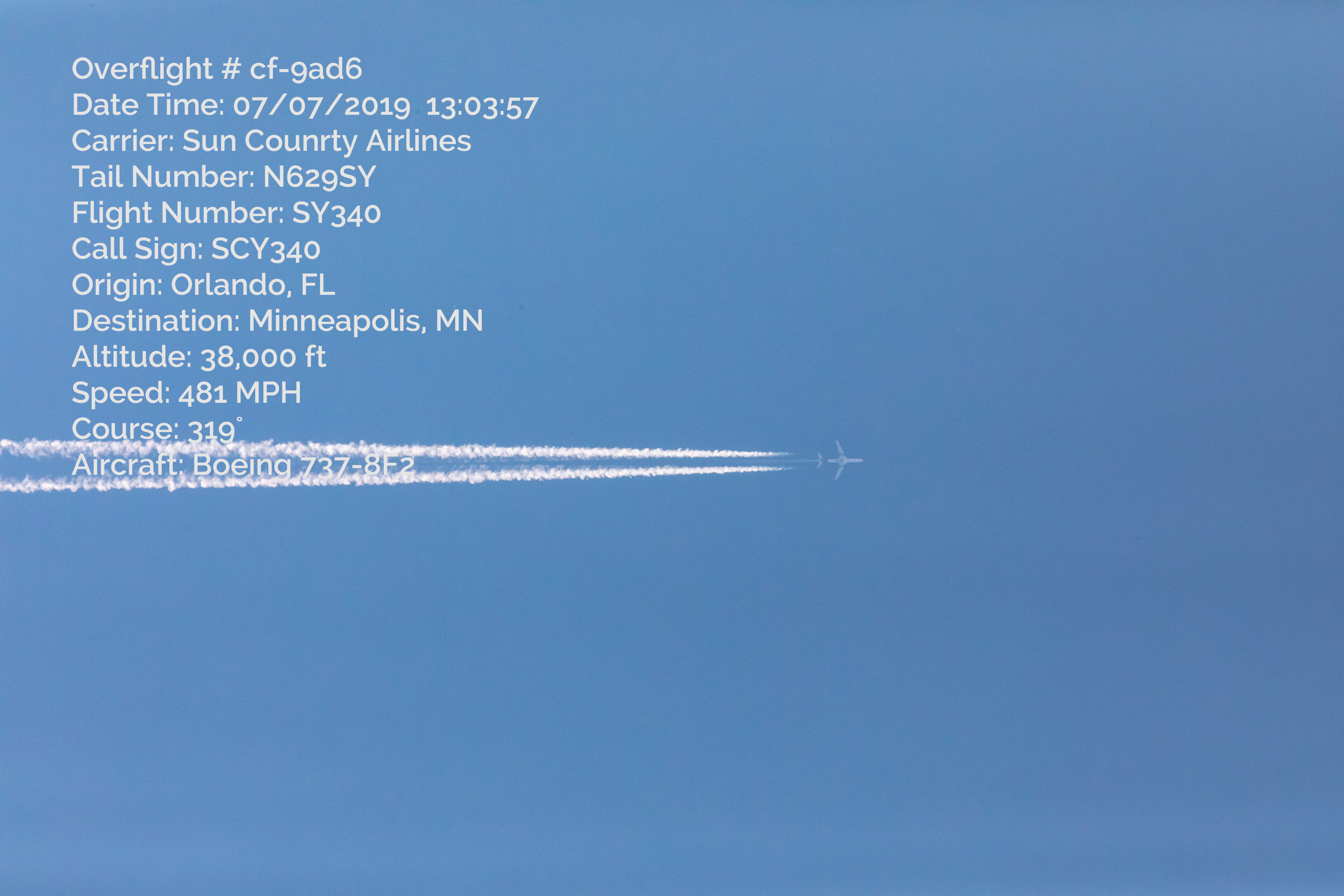
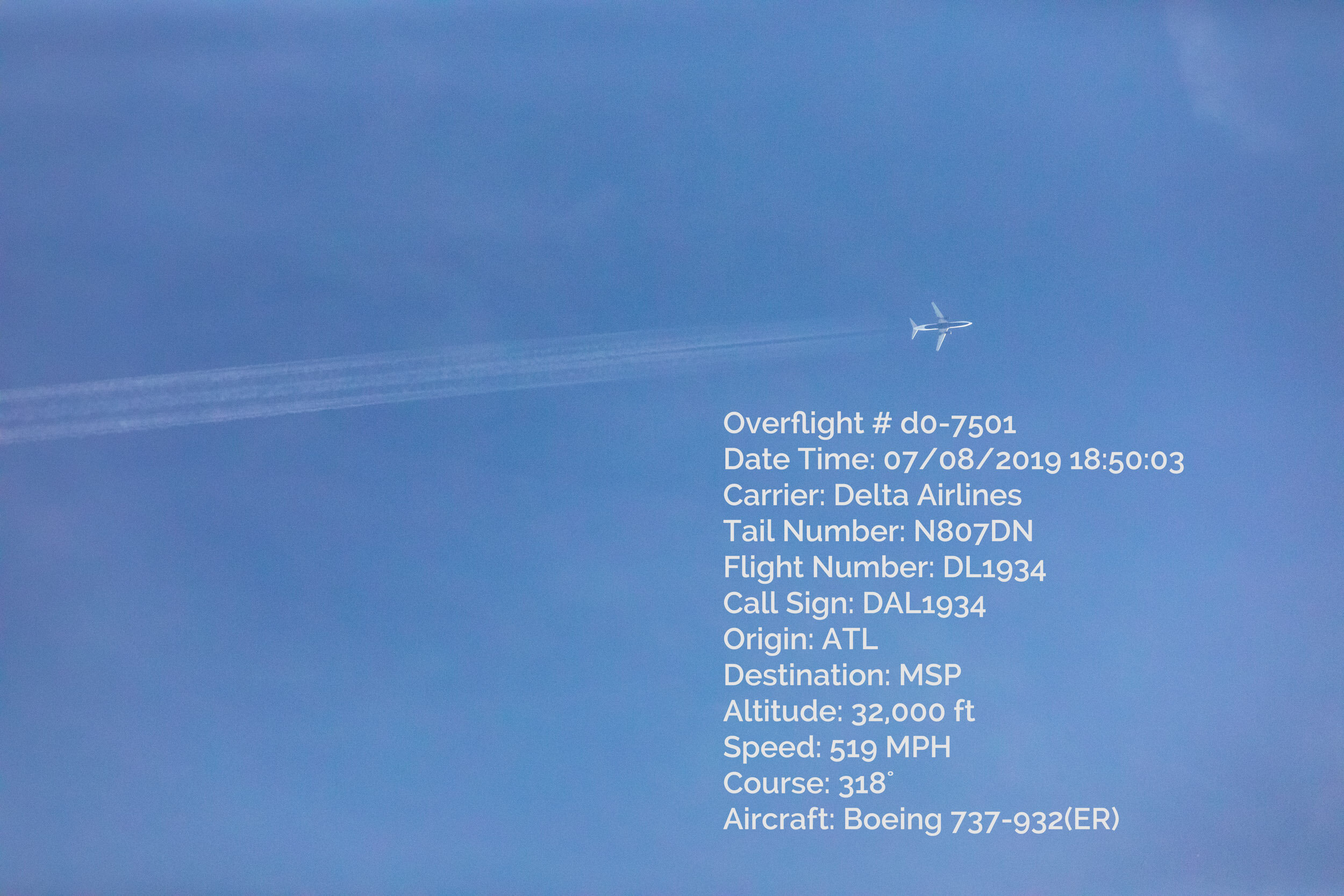
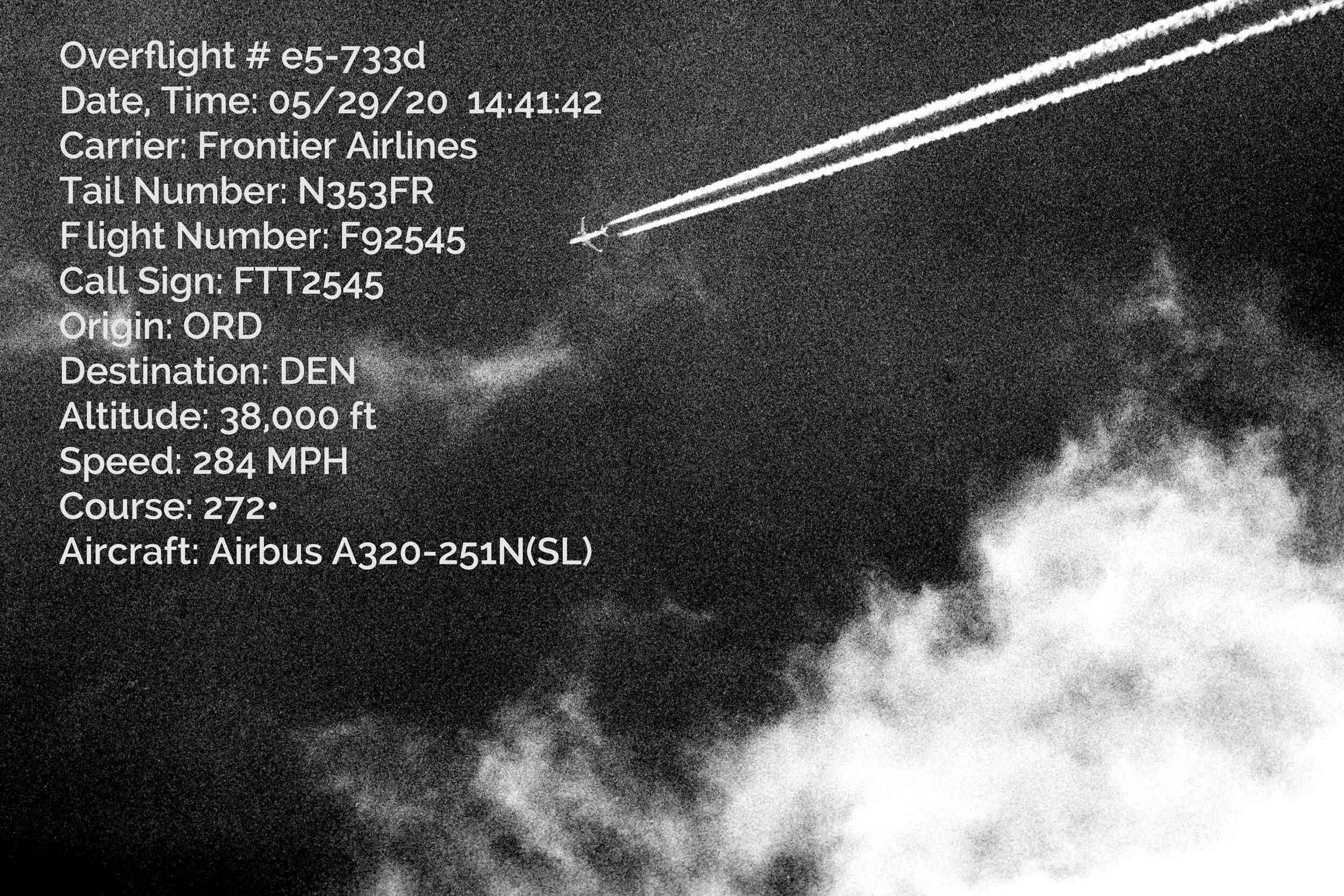
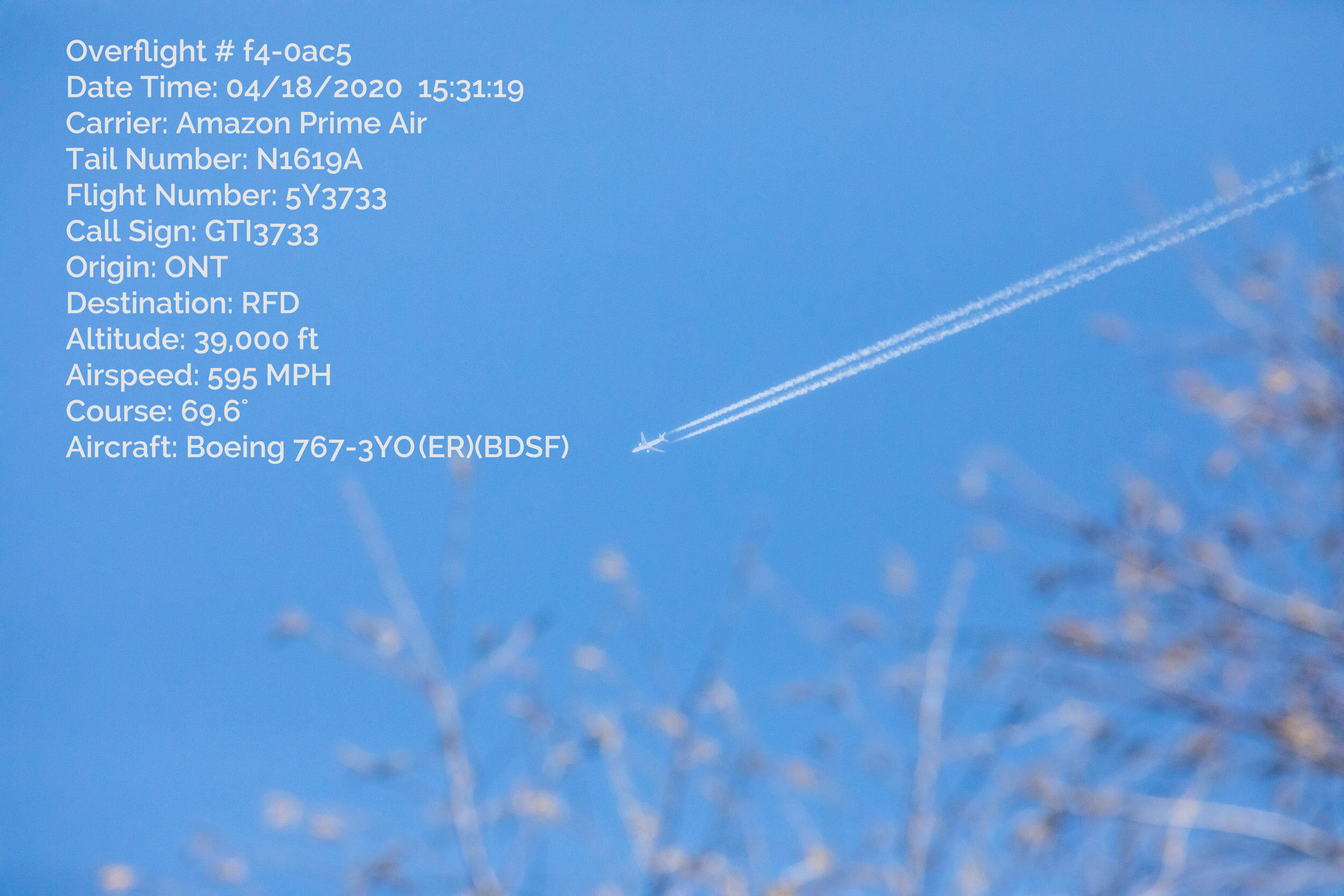
My project to document aircraft that overfly our property started on a late winter day in 2014. I was walking about our property, camera in hand, searching for found compositions — the kind of thing that you find after all of the snow has melted, leaving behind the random collection of items, once trapped in the snow, but now set free on a tableaux of matted grass or clotted gravel. That day was just such a day, and although days were growing longer, and the sun was beginning to rewarm the earth, the wind retained its bite and the air still held it’s bright clean winter clarity. As I looked skyward, I discovered my found compositions — a field of crystalline blue where a few items were cast —— some barren winter tree limbs, and a jet aircraft supported by a contrail. The Zeiss lens of my camera and Fuji Provia slide film rendered the images in all of the bright clarity present on that day (see images # 04-662a and # 0a-2a46). After the film was developed and scanned, I looked at the images of the aircraft, thinking of the days as a child when an aircraft overhead, particularly a jet, would cause awe and wonderment. The rare sight of a jet could cause endless arguments among my peers in grade school, especially about who was on the plane, with generals and football players usually beating movie stars in the opinion of 3rd to 5th graders. Although we did not appreciate it at the time, it was our ignorance of any information about the air flight that allowed us the luxury of endless speculation.
In the series of images in Project Overflight, my intent was in part document the aircraft flying over our property, and also as a social commentary on the 24/7 surveillance state in which we exist. Flyover Country —a term applied to a vast swath of the middle of the country. I live in the middle of flyover county. On a few acres where we have lived for almost 30 years, I have seen 100’s, perhaps 1000’s of aircraft fly over our property. The most aircraft I have seen at any one time is 14, which was on a Saturday afternoon about 8 or 10 years ago. I realize now that thinking that I could see most of the aircraft that were within my field of view was naïve in the extreme.
To create the images, I have used both film and digital cameras. I am a dedicated film photographer and in the beginning, I had planned to only use film for the images. My intent was to create images with a gritty feel that would suggest old, film based surveillance. During the time when I developed the technique to photograph the aircraft, in 2016 I used a medium format camera with a standard non-telephoto lens, as I had for the first two images from 2014. The results were disappointing — with out the clear winter air, the aircraft were not as clear, and in general the images which I had used some old, expired medium format film, lacked any appeal. After a lot of consideration about how to photograph the aircraft one day in 2019 I decided to test my digital SLR camera with a 400mm lens. It was a crazy idea — after all, why would I or anyone expect to be able to produce reasonably clear image of an aircraft that was more than 7 miles above the earth, traveling at over 500 MPH. So I attached my 400mm lens, the longest lens that I owned to my digital SLR body and went out to the back yard, where I sat down and waited. Sooner, rather than later, I spotted an aircraft, flying west to east. I centered it in the viewfinder, the autofocus locked onto it, and as I tracked along with the aircraft and fired off 10 or 15 frames. As I flipped the camera over to check the result, I thought once again, this was a waste of time — which was not entirely true, as it had been a pleasant morning sitting in the yard. When the first image appeared on the camera monitor, I was dumfound. It had worked, better than I could possibly hope for (Overflight # 33-14e6). The image, while not crisply in focus, showed an object that was clearly recognizable as an aircraft. Furthermore, the aircraft had a somewhat unusual paint scheme — and there seemed to be logo on the bottom. The logo looked familiar, but was out of focus enough that I could not make it out.
In thinking that using a hand held 400mm lens to photograph aircraft miles above my head could never yield an acceptable focused image, I had underestimated the advance of modern photographic technology. Although the camera and lens I used were not entirely state of the art, they possessed the 3 elements that made the system able to capture an image of an aircraft that was 6.5 miles above me, traveling at over 500 MPH: 1) High speed autofocus 2) High shutter speed (1/5000 second) and 3) Image stabilization. So although I had planned on using film, I began regularly photographing aircraft with my digital SLR camera. After I reviewed some of my digital images, I discovered that details visible in the digital images have a compelling attraction. Some of the images seem to be photographs of a child’s toy, tossed too high and now stuck on an invisible tree limb. Or a diorama, where the scenes are constructed to ask us to suspend belief in the real world and enter into a make believe world, where reality meets imitation and creativity. A constructed diorama is a perfect analogy, having been built, like all of our surveillance world, to deceive the viewers (see Overflight # 8b-b53b & Overflight # 5b-7fe6).
My next discovery was when I looked into how to identify the aircraft I had captured at 07:04.28 on 4/28/2019 . While I thought that it would be sufficient to simply photography the aircraft, if I could identify individual aircraft, would be a bonus. Google quickly led me to aircraft tracker services, and associated software and apps. I was again dumbfounded, a smartphone app that allows me to identify in real time almost any aircraft I can see? — of course there are! Now, all I need to do to identify an aircraft overhead is to take out my smartphone and with a swipe and a few clicks, the identity of the aircraft and all of the associated data are there for me to peruse. The discovery of the aircraft tracker apps brought the surveillance concept full circle for me. In the modern world, there really isn’t any place where you can remain anonymous. After purchasing the apps, I learned that Overflight # 33-14e6, the aircraft with an unusual paint scheme turned out to be from a new airline — Amazon Prime Air.
I hope you enjoy viewing the images that I’ve created for my Project Overflight. Although the project began in earnest in 2019, since the advent of COVID, I have focused more time and energy on the project as I am home 24/7. I am not certain when or where the project will end, as there are at least 2 other aspects that I would like to explore.
